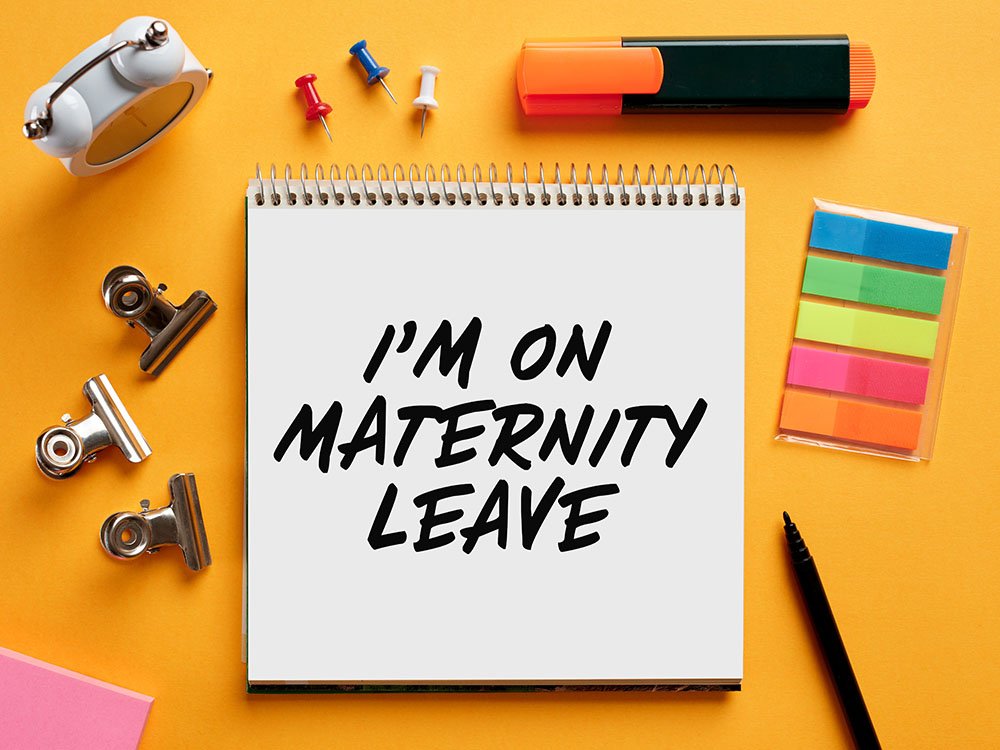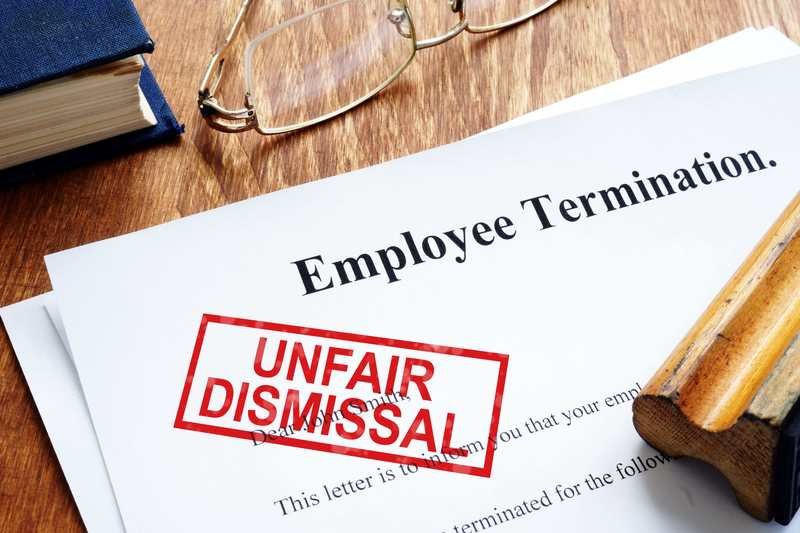Monthly Newsletter
Monthly Newsletters
March 2024
Forthcoming Legislation – Employment Law Updates April 2024
Minimum Wage Increases from April 2024
The Government has announced the National Living Wage (NLW) and National Minimum Wage (NMW) rates which will apply from 1 April 2024. The NLW will be extended to 21 and 22-year-olds for the first time (having previously applied to those aged 23 or older).
The new rates will be as follows:
• the NLW (for people aged 21 or older) will increase from £10.42 to £11.44 per hour
• the 18–20-year-old rate will increase from £7.49 to £8.60 per hour
• the 16–17-year-old rate will increase from £5.28 to £6.40 per hour
• the apprentice rate will increase from £5.28 to £6.40 per hour
• the accommodation offset will increase from £9.10 to £9.99 per day.

Occupational and Personal Pension Schemes (General Levy) (Amendment) Regulations 2024
Effective from 1st April 2024, these regulations introduce new rates that will be used to calculate the general levy payable by occupational and personal pension schemes.
Having consulted on options for mitigating the ongoing deficit in levy funding, the Government has decided to retain the current levy structure and increase rates by 6.5% per year for all schemes.
The general levy recovers the core running costs of the Pensions Regulator and the Pensions Ombudsman. It also covers those aspects of the Money and Pensions Service (MaPS) which relate to general pensions guidance and elements of the pensions dashboard.

Maternity Leave, Adoption Leave and Shared Parental Leave (Amendment) Regulations 2024
These regulations bring into force the Protection from Redundancy (Pregnancy and Family Leave) Act 2023, extending the period of special protection from redundancy for employees who are on maternity, adoption or shared parental leave to 18 months after birth or adoption, and to during pregnancy.
Under current laws, if employees on maternity, adoption or shared parental leave are at risk of redundancy, employers must offer them suitable alternative employment where a vacancy exists, giving them priority over other redundant employees. However, the employer’s obligation ends once the employee has returned to work. As a result, some employers wait until an employee has returned to work from a period of family-related leave before making their job redundant.
Under the new legislation, the obligation to offer suitable alternative employment would be extended to apply to pregnant employees and those who have recently returned from a period of family-related leave. The extended protection period would cover from when an employee tells their employer they are pregnant until 18 months after the birth. The 18-month window ensures an employee returning from a year of maternity leave would receive six months’ additional redundancy protection.
For adoption, the protected period would cover 18 months from placement for adoption. And, for shared parental leave, the protected period would cover 18 months from birth provided the parent had taken at least six consecutive weeks of shared parental leave. Parents taking shared parental leave could not claim this protection if they were already covered by the legislation due to pregnancy or adoption.
Subject to parliamentary approval, the extension to the protected period will apply where the employer is informed of the pregnancy, birth or placement for adoption on or after 6 April 2024.
For our retained clients: You will shortly receive an updated policy via email for your Employee Handbook to reflect these changes.

Flexible Working Regulations Amendment
These regulations amend the Flexible Working Regulations 2014 so that the right to make a flexible working request applies when an employee begins employment. They remove the current requirement for employees to have been continuously employed for 26 weeks before making a flexible working request and thereby make the right to request flexible working a “day one right”.
The requirement for 26 weeks’ continuous employment will not apply to flexible working requests made on or after 6 April 2024.
Other changes to flexible working legislation are contained in the Employment Relations (Flexible Working) Act 2023, which will be brought into force via separate regulations that are also expected to be effective from 6 April 2024.
For our retained clients: You will shortly receive an updated policy via email for your Employee Handbook to reflect these changes.

Carer’s Leave Regulations 2024
These regulations set out the statutory scheme under which employees can apply for up to one week of unpaid carer’s leave per year in order to provide care or assistance to someone dependent upon them who has a long-term care need. The new right to carer’s leave is introduced by the Carer’s Leave Act 2023 and the Carer’s Leave Act 2023 (Commencement) Regulations Act 2023.
Eligible employees will have a “day-one” right to carer’s leave. The right will apply to employees who have a dependant with a long-term care need and want to be absent from work to provide or arrange care for that dependant.
The employee will be entitled to take at least one week’s leave in any 12-month period. The leave could be taken flexibly in individual or half-days.
The regulations set rules around notice and postponement of carer’s leave. Employees will be required to give written notice of their intention to take carer’s leave — confirming their entitlement to take it and giving notice periods as specified in the regulations. Evidence of entitlement to take the leave will not be required.
Employees taking carer’s leave will have the same employment protections as those taking other forms of family-related leave, including protection from dismissal or detriment as a result of having taken the leave.
For our retained clients: You will shortly receive an updated policy via email for your Employee Handbook to reflect these changes.

Employment Rights (Increase of Limits) Order 2024
The increases to tribunal award limits from 6 April 2024 are set out in the Employment Rights (Increase of Limits) Order 2024.
• The maximum compensatory award for unfair dismissal increases from £105,707 to £115,115. (The award is capped at the lower of this maximum figure or 12 months’ pay.)
• The minimum award of compensation for dismissal on trade union, health and safety, occupational pension scheme trustee, employee representative and working time grounds only increases from £7836 to £8533.
• A week’s pay for the purpose of calculating the basic award for unfair dismissal and redundancy payments increases from £643 to £700.
• The daily rate for guarantee pay increases from £35 to £38.
The increases apply where the event giving rise to the entitlement to compensation or other payments occurs on or after 6 April 2024.

National Insurance Contributions (Reduction in Rates) (No. 2) Bill
This Bill introduces a cut in the main rate of primary (employee) Class 1 National Insurance contributions (NICs) from 10% to 8% and a cut in the main rate of self-employed Class 4 NICs from the previously announced rate of 8% to 6%.
The reduction in Class 1 NICs to 8% was legislated in the National Insurance Contributions (Reduction in Rates) Act 2023.
The Bill is being fast-tracked to receive Royal Assent before the current parliamentary session ends on 26 March 2024.
For further support and advice on any of these Employment Law updates, please contact The HR Team.
February 2024

Skilled Worker Visas – what rules are changing?
The Government has announced plans to cut net migration numbers into the UK. Several changes are set to be introduced from spring 2024 that employers need to be aware of when employing, or in some cases continuing to employ, foreign nationals.
Background
The Government has announced a package of proposals designed to cut net migration numbers into the UK, to halt what the Home Secretary, James Cleverly, has said is a “…drastic rise in our work visa routes…” as net migration is “…far too high”. These plans are designed to “…crack down on those who seek to take advantage of our hospitality”.
According to the Government’s calculations, 300,000 people who came to the UK in 2022 would not have been able to do so under the plans it has now proposed. In response to concerns that this would leave the UK without access to a valuable pool of potential workers, the Government is prioritising growing the domestic workforce through the Back to Work Plan, designed to provide employment-focused support that will help people stay healthy, get off benefits and move into work.

Visa changes
First, there are plans to increase the annual salary required to receive a UK skilled worker visa from £26,200 to £38,700. This is to stop immigration from, according to the home secretary, undercutting the salary of British workers. However, those coming on the health and care visa route will be exempted from the increase to the salary threshold for skilled worker visas.
The Government will also increase the minimum income required for British citizens and those settled in the UK who want their family members to join them, which Mr Cleverly has said is to ensure that people only bring dependants whom they can support financially. Initially, the Government announced that they would raise the minimum income for family visas to the same threshold as the minimum salary threshold for skilled workers (this would have meant an increase to £38,700 from £18,000). However, they have since announced that the intention is to raise the minimum income for family visas incrementally, in stages, “to give predictability to families”. In Spring 2024, therefore, the threshold will increase to £29,000, which is the 25th percentile of earnings for jobs at the skill level of the Regulated Qualifications Framework (RQF3). The Home Office intends to increase to the 40th percentile (currently £34,500) and then to the 50th percentile (currently £38,700) at a date to be set in the future.
Dependants will also be prevented, from January 2024, from joining international students in the UK unless they are on postgraduate courses designated as a research programme. The health and care visa rules will also be tightened up by preventing overseas care workers from bringing their dependants to the UK. In addition, care firms in England must be regulated by the Care Quality Commission (CQC) in order for them to sponsor visas, which is hoped to crack down on bogus care firms sponsoring individuals with no intention (or even means) to provide them with work.
Finally, in relation to visa changes, the Government will end the 20% going rate salary discount for shortage occupations and replace the Shortage Occupation List with a new Immigration Salary List, which will retain a general threshold discount.
In response to these proposals, Chief Executive Officer of Care England, Professor Martin Green, said: “If the Government now wants to move away from international recruitment as the solution to fixing the social care workforce crisis, it must act swiftly and invest in improving the pay and conditions to drive domestic recruitment.”

Illegal working penalties
In the biggest change to civil penalties since 2014, fines are to be more than tripled for employers who allow illegal migrants to work for them. Announced during Suella Braverman’s time as home secretary, the penalty for employers, last increased in 2014, will be raised to up to £45,000 per illegal worker for a first breach from £15,000 and up to £60,000 for repeat breaches from £20,000. A consultation will also be opened in the future on options to strengthen action against licensed businesses that are employing illegal workers.
Employers should already be checking the eligibility of anyone they employ. If the individual has a time-limited right-to-work entitlement, as is the case with many types of Visa, follow-up checks will be needed to ensure this is renewed.
There are several ways to check right-to-work eligibility, which are not changing, including via a manual check of original documentation and a Home Office online checking system. Below, we outline what these are.

Carrying out right-to-work checks
Right to work checks should always be completed before employing someone new, regardless of their country of origin. Follow-up checks may also be necessary during employment. If completed correctly, employers will establish a continuous statutory excuse for the duration of that person’s employment, providing a defence should it later turn out that the individual’s right to work was not genuine. These checks should be carried out in the time immediately prior to their employment starting, because an individual’s right-to-work status can change over time.
Checks can be carried out in the following ways-
• Manually.
• Online.
• Digitally.
The following checks can be completed for British and Irish citizens-
• A manual document-based check.
• A digital check using Identity Document Verification Technology (IDVT) via the services of an Identity Service Provider (IDSP).
The validity of the documents must be checked in the presence of the holder, either physically or via video link, and the employer must be in physical possession of the original documents. Alternatively, employers can conduct a digital check using IDVT via the services of an IDSP.
The following checks are available for all other nationalities-
• A manual document-based check.
• An online check using the Home Office checking service.
A record must be kept of all checks that are carried out and retained for at least the duration of the individual’s employment.

Conclusion
The rules around employing foreign nationals are set to change once again next year, and employers will need to be prepared where the changes impact on their current employees and their future recruitment plans.
Now is also the time to review any internal right-to-work checking processes to ensure they are fully compliant with the law and provide the organisation with the statutory excuse. Failing to ensure these checks are correct can be a very costly mistake and therefore taking the time to review these processes is worthwhile.
For expert advice and guidance with your Company’s skilled worker visa application process, contact The HR Team.
January 2024

What does a leap year mean for employers?
29th February does not come around very often; only every four years in fact. And this year, 2024, is one of those years. But what difference does it make for employers, and will it mean workers need to be paid an extra day’s pay? This month, we look at leap years and their implications in the workplace.
Background
Every four years, there’s an extra day at the end of February. It’s called a “leap day” and it means that February becomes 29 days long, and the year becomes 366 days long. This year, it’s on a Thursday.
Leap years exist because a single year in the Gregorian calendar is slightly shorter than a solar year, or the amount of time it takes for Earth to completely orbit the sun once. A calendar year is exactly 365 days long, but a solar year is roughly 365.24 days long, or 365 days, five hours, 48 minutes and 56 seconds. Failing to account for this difference would mean that for each year that passes, the gap between the start of a calendar year and a solar year would widen by five hours, 48 minutes and 56 seconds. Over time, this would shift the timing of the seasons which would impact on many aspects of day-to-day life.
What it means for employers
Workers may ask if they get paid for an extra day in a leap year. It is an extra day, after all, and with it being on a Thursday this year, many will see it as an additional working day. However, the answer isn’t as simple as that. It all depends on their pay structure.
Hourly paid workers
In the case of an hourly paid worker who has a pay reference period of one week, i.e. they’re paid weekly, they will not see any actual difference in their pay because the number of days worked in their pay reference period has not changed — a leap day does not mean a seven-day week becomes an eight-day week, so these workers will have worked their usual hours.
When it comes to an hourly paid worker with a pay reference period of one month, i.e. they’re paid monthly, they will see an increase because the number of days worked in the pay reference period has changed; they will work for 21 days in February rather than the usual 20 days. Therefore, they are owed an extra day’s pay because they have worked an extra day.
Salaried workers
Salaried workers will not see any difference in pay because they are paid with reference to the year and not the hours worked. However, for workers who are paid at the National Living/Minimum Wage, it’s worth running a compliance check to make sure there are no breaches around the leap day.
Leap day and key dates
Pay day
Where employees are paid on the last day of the month, this can mean workers are paid their February pay a day later than is usual, which could have significant consequences, particularly for those living on a tight budget. Employers should therefore decide whether they will still pay on day 28 or follow the contract and pay on day 29. Whichever way is decided upon, it should be confirmed to employees in time for them to put any necessary plans in place.
Statutory sick pay
For employees who go off sick in the final days of February, when processing payroll, the extra day will need to be considered when counting waiting days, which could affect when payment begins.
Deadlines/meetings
Recurring deadlines and meetings are a normal part of working life. They can help with managing employee workloads and making sure important tasks are completed in a timely manner. However, care must be taken to ensure these are not impacted by there being a 29 February this year. Checking in advance can help to avoid any mistakes when the time comes.
Notice
Lots of things in employment law operate with reference to a number of days, and employers will need to identify if this will impact any of their employees.
First, employers will need to remember to factor in the extra day in the month when giving someone termination notice in terms of days. Otherwise, it could mean that an individual whose employment is scheduled to end on 1 March, when in fact it should be 29 February, is given an extra day’s pay.
The same applies where employees request annual leave (where the employer requires a certain number of days’ notice), parental leave (which needs 21 days’ notice of the start date of the leave), paternity leave (which must be taken within 56 days of the birth), etc. Day 29 needs to be remembered here otherwise a request could be denied on the basis that correct notice hasn’t been given when it has. Remember also, anything that gives a date range such as “27 February–3 March” is six days, when it would be five in non-leap years.
Takeaways
For many employers, they will not be affected by the leap year. However, for those that are, any decisions made relating to this should be communicated to employees to ensure everyone is treated fairly and consistently.
For expert knowledge and support with any HR query, contact The HR Team Team today.

What is protected notice pay?
‘Protected’ notice arises when an employee is dismissed, or resigns, and the following circumstances apply:
• They are ready and willing to work but no work is available (e.g. a lay off situation)
• They are incapable of work because of sickness or injury
• They are absent from work because of pregnancy or childbirth, or on adoption parental or paternity leave (exercising their right to family friendly leave)
• They are absent from work due to holiday.
Where this is the case, and their notice period is the same or not more than a week more than the minimum notice required by the Employment Rights Act 1996 (i.e. a week for every year of service, to a maximum of 12), then ‘protected notice’ applies. This means that rather than being paid what they normally would be paid for the type of leave they are on during the notice period, such as maternity pay, sick pay, or nothing if there is a lay off situation, they would instead get full pay for the entire notice period.
For example, if an employee is off sick, and only paid statutory notice, the protected notice rules apply and they should receive full pay for the duration of their notice period. This can be made up of sick pay and normal pay; there is no requirement to pay their full pay and sick pay on top of that.
For pragmatic advice and friendly, down-to-earth HR support, contact The HR Team today.

Government publishes draft Paternity Leave Regulations
The Government had committed to amending the current legislation on parental leave following a consultation to which it had received 185 responses. Now it has published a draft Statutory Instrument (SI), the Paternity Leave (Amendment) Regulations 2024.
Although the adopted version of this SI has still to be published, none of the main terms are likely to be changed before it comes into force on 8 March 2024.
The draft regulations set out changes to the way in which the statutory entitlement to paternity leave is exercised. The amendments make changes to requirements relating to notice and evidence, the period within which paternity leave must be taken, and the existing requirement that paternity leave be taken in one continuous period.
The main changes include the following-
- Amendments will take effect in relation to children whose expected week of childbirth is after 6 April 2024, and children whose expected date of placement for adoption, or expected date of entry into Great Britain for adoption, is on or after that date.
- Provision is made for situations where an employee has served a notice or provided information or a declaration under the provisions in force prior to the coming into force of these regulations. The employee will be deemed to have complied with any requirement in the amendments in these regulations to provide that information, declaration or notice.
- An employee will be allowed to choose to take either two non-consecutive weeks’ paternity leave (birth), or a single period of either one week or two weeks. The period in which paternity leave (birth) must be taken is extended from 56 days after the birth of the child, to 52 weeks after the birth. Similar amendments are made in respect of paternity leave (adoption).
- Details are given of the notices and evidence of entitlement an employee must give to an employer in order to take paternity leave (birth). This includes a provision for an employee to vary any leave dates notified previously. Similar provision is made in relation to paternity leave (adoption).
For help with amending your Family Friendly Policy this year, in order to remain up to date with Employment Legislation changes, contact The HR Team today.
December 2023

How to retain your best employees in 2024
As the challenges of recruitment intensify and employee expectations rise, business leaders must adopt strategic thinking to retain their top talent in the coming year.
The current landscape, marked by a global pandemic, the Great Resignation, and a phenomenon known as “quiet quitting,” signals a significant recalibration in how people integrate work into their lives. Despite record rates of quiet quitting and job transitions, a substantial number of employees express dissatisfaction, creating a fertile ground for pursuing employment upgrades—a narrative echoed worldwide.
In order for companies to achieve their overall business goals for 2024, business leaders must focus on how to retain their best employees. Achieving this involves cultivating commitment within the workforce, a task highlighted by numerous studies on retention and turnover. Success hinges on excelling in three crucial aspects of the employee experience. In the post-Covid era, employees remain loyal and psychologically engaged when they secure their ideal job, engage in meaningful work, and work under the guidance of a great leader.
What can you do as a business leaders and how HR can contribute to shaping these experiences within your organisation?
• Ideal Job:
To define an ideal job, employees assess three key factors: pay, workload, and flexibility. Employees across the world now demand higher wages, reject the hustle culture, and prioritise flexibility—the most sought-after workplace benefit globally. Adequate compensation, a challenging yet manageable workload, and flexibility in when, where, and how they work significantly impact long-term commitment. To enhance this dimension, leaders must innovate compensation structures, optimise workloads through staffing adjustments, and offer benefits that outshine competitors. Continuous efforts to elevate wages and empower workers with more control over their work experience contribute to organisational loyalty.
• Meaningful Work:
The meaningful work dimension centres on the daily work experience, focusing on three key elements: purpose, strengths, and belonging. Employees seek a sense of purpose in their work, aligning their strengths with job responsibilities while feeling accepted within a team. Commitment flourishes when employees believe their work has a meaningful impact. To enrich this experience, leaders should articulate the societal significance of their company’s work, invest in job crafting to align roles with individual talents, prioritise professional development, foster camaraderie among team members, and create an inclusive workplace. These actions collectively contribute to employees finding meaning in their daily tasks.
• Great Leadership:
The third dimension revolves around the individuals overseeing day-to-day work—direct managers. Research highlights the pivotal role of leaders in shaping the employee experience, with managers influencing engagement levels significantly. Effective leadership involves coaching, building trust, and advocating for employees’ best interests. Managers who consistently engage in coaching conversations, earn and grant trust, and advocate for their team members foster positive work experiences. Elevating the great leadership factor necessitates investments in leadership development and management training, creating platforms for leaders to collaboratively address challenges, and upskilling in communication skills. Establishing a people-first culture that prioritises wellbeing further reinforces leadership excellence.
These three dimensions—ideal job, meaningful work, and great leadership—form an internal psychological scorecard for each employee relative to their employer. These factors also reflect the job upgrades and quality of life enhancements that continue to drive record amounts of turnover across a multitude of industries.
Contact The HR Team for expert advice and on-going support with your HR Strategy for 2024.

Is it time for an Equal Pay Review?
Businesses should regularly carry out equal pay reviews for several reasons; reflecting legal requirements, ethical considerations, and the promotion of a fair and inclusive workplace.
Key reasons:
• Equal Pay Legislation:
The UK has a legal framework, including the Equality Act 2010, that mandates equal pay for equal work. Employers are required to ensure that there is no gender pay discrimination in their organisations. Conducting equal pay reviews helps companies comply with these legal obligations.
• Gender Pay Reporting Requirements:
In addition to the general equal pay provisions, companies in the UK with 250 or more employees are required to report their gender pay gap annually. Conducting regular equal pay reviews assists companies in identifying and addressing any gender pay gaps, ensuring compliance with reporting requirements and addressing potential legal consequences.
• Legal Compliance and Risk Mitigation:
Failure to comply with equal pay legislation can result in legal challenges and financial penalties. Regular equal pay reviews help companies identify and rectify any pay disparities, reducing the risk of legal action and demonstrating a commitment to fair employment practices.
• Employee Morale and Engagement:
Ensuring equal pay contributes to a positive workplace culture, boosting employee morale and engagement. Employees are more likely to be motivated and committed when they perceive that they are being treated fairly in terms of compensation.
• Promotion of Diversity and Inclusion:
Equal pay reviews align with efforts to promote diversity and inclusion. By addressing pay disparities, companies contribute to creating a workplace where individuals from diverse backgrounds feel valued and included, enhancing overall organisational diversity goals.
• Reputation Management:
Companies that actively address and eliminate gender pay gaps are more likely to maintain a positive reputation. Reputation matters in attracting and retaining talent, as well as in appealing to socially conscious consumers and investors.
• Talent Attraction and Retention:
In a competitive job market, potential employees may consider a company’s commitment to equal pay as a factor in their decision to join the organisation. Likewise, existing employees are more likely to stay with a company that demonstrates a commitment to fairness and equality.
• Benchmarking and Improvement:
Regular equal pay reviews enable companies to benchmark their pay practices against industry standards and identify areas for improvement. This proactive approach allows organisations to continuously enhance their equal pay practices.
In summary, conducting equal pay reviews is not only a legal requirement but also a strategic and ethical practice. It helps companies uphold legal standards, foster a positive workplace culture, mitigate risks, and contribute to broader societal goals related to gender equality and diversity.
For practical support with an Equal Pay Review and help implementing an Equal Pay Policy, contact The HR Team for expert advice.

Largest ever National Minimum Wage Increase
The Government has announced that it has accepted the Low Pay Commission’s recommendations on minimum wage rates to apply from 1 April 2024. This is the largest ever increase to the minimum wage in cash terms.
For the first time, The National Living Wage will apply to all workers who are aged 21 and over (previously this only applied to people aged 23 and over).
The annual increases to the minimum wage and national living wage with effect from 1 April 2024 are as follows:
• 21 and over – £11.44 (increase of £1.02)
• 18-20 – £8.60 (increase of £1.11)
• 16-17 and apprentices – £6.40 (increase of £1.12)
These increases are effective from 1st April 2024, so it is important to review your employees’ salaries in February/March, so that you have time to communicate wage increases via Contract Amendment letters to any affected employees. Otherwise, you will need to backdate any necessary increases to 1st April, in order to avoid any future disputes around failing to pay the minimum wage.
For support with amending employee terms and conditions, including letter templates to communicate salary increases, contact The HR Team today.
November 2023
HR Insights November 2023 | The four-day working week: is it right for your business?
Working a four-day week: does it mean “less value for money” or is it the answer to improving employee wellbeing, commitment and retention?

The debate rumbles on, with valid points being made on both sides. In this month’s HR Insight, we take a look at the issue of the four-day working week, and what employers need to think about if trialling it in their own business.
In 2022, a major six-month trial of the four-day working week was carried out, whereby 61 organisations, totalling nearly 3000 employees, reduced their working days but maintained employee pay at 100%. Of those that took part:
• 92% continued with the trial
• 18% permanently adopted four-day week working
• 35% increased their revenue (compared to the same period in previous years)
• 57% reported higher retention rates than normal.
According to a survey conducted on the participants of the six-month trial, the following positive benefits were found of the four-day working week.
• 71% of employees had reduced levels of burnout by the end of the trial.
• 54% said they experienced fewer negative emotions.
• 46% reported a reduction in fatigue.
• 43% felt an improvement in their mental health.
• 40% saw a reduction in sleep difficulties.
• 39% were less stressed.
• 37% saw improvements in their physical health.
• 21% reported a reduction in childcare costs.
These positive results, along with a 2022 CIPD survey finding that 34% of organisations thought that the four-day week would become the norm within the next 10 years, suggest this could be the future for many organisations.
However, there are critics of this approach. In early July 2023, Local Government Minister, Lee Rowley, formally requested South Cambridgeshire District Council end its trial of a four-day week “immediately” over concerns about “value for money”, due to the potential impact it could have on the needs of local taxpayers. This is despite the council citing the trial as having a positive impact on its recruitment difficulties, enabling it to fill four previously impossible to fill permanent posts, reducing the council’s £2 million annual agency bill by £300,000.

So how can employers take advantage of the positives, whilst avoiding the potentially negative consequences of the four-day working week?
Planning and preparation are the keys to success –
For some businesses, moving towards a four-day working week will be relatively straightforward but nevertheless it will still be essential to get the buy-in of major stakeholders in the business. For organisations that are looking to start their own trial of a four-day working week, a detailed plan will be necessary to work out exactly how work will be organised and what efficiencies can be implemented.
Part of this planning is designing how the four-day week will look for the particular organisation. Some ways of arranging this type of working are:
• Fifth day stoppage – Shutting down operations for one day per week.
• Staggered – Alternating days off are taken by staff: one example is dividing staff into two teams with one team taking Mondays off and the other taking Fridays off.
• Decentralised – Allowing different departments to operate different work patterns.
• Annualised – Employees working a 32-hour average working week, calculated over a year.
This is especially useful for organisations where there is a seasonal fluctuation in trade. Individual organisations must decide which is the best option for them. Discussing this with employees and other key stakeholders in the business will be an important part of designing these plans.
Mitigating negative effects
Working shorter hours without reducing workloads raises an important question: how can employers mitigate the negative impact of this? Whilst an additional day off each week will offer many restorative benefits to employees, doing the same amount of work in a shorter time could lead to additional stress and pressure on individuals.
Key to mitigating the impact of this is to find innovative and practical ways of working smarter. This might include reviewing the frequency and content of meetings, automation, consolidating processes and introducing interruption-free time to allow those that need it time to focus on the task at hand without any distractions. Time should still be given, however, to working collaboratively and to forming and maintaining working relationships, to ensure the workplace culture does not turn “toxic” and the organisation remains a positive and sought-after place to work.

Measuring success
Before embarking on a trial of a four-day working week, the organisation needs to decide what “success” looks like for it and what markers will be used to decide whether or not to continue with the change permanently. What these will be will vary from businesses to business but some markers that might be used are:
• productivity
• performance
• employee satisfaction
• employee engagement
• employee recruitment and retention.
Only once the organisation has decided what success looks like can it begin to determine whether or not a four-day week is right for it.
Listen to feedback
Whatever the organisation has chosen to use as its measure for success, gathering and listening to feedback from the workforce will be an important part of assessing how well practically a four-day week will work for the organisation. What is going well, what is not and how that might be changed are all important insights as the business continues to fine-tune its working practices to adapt to four days, and ensures employees feel valued and listened to, and are therefore more likely to remain committed and loyal to the business.
Conclusion
A four-day working week is not for every business, however, as employers continue to face issues with recruitment and retention, for those that are able to do so, it may be worth considering. The principles of a four-day working week, however, can still be utilised even by employers not willing or able to commit to such a move. Focusing on efficiencies allowing for staff to use their time more wisely will be a benefit to many and could lead to an increased ability to approve flexible working requests in the future or even the possibility of “summer hours” where a reduced week is worked during peak summertime.
For more information regarding ‘The Four-day Week’ or any other HR assistance please contact The HR Team…
October 2023
HR Insights October 2023 Suspension and Investigation

Can an Employer suspend an employee, pending an investigation?
The simple answer is yes, you can suspend an employee pending an investigation, but it should be done for valid and justifiable reasons, and the process should adhere to established procedures and principles of fairness. Here are some key points to consider:
• Reasonable Grounds: To suspend an employee, there should be reasonable grounds for believing that suspension is necessary. Common reasons include allegations of serious misconduct, investigations into potential criminal activity, or the need to protect the interests of the business.
• Notice and Communication: You should inform the employee of the suspension in writing, specifying the reasons for the suspension and its expected duration. The suspension letter should also invite the employee to attend a meeting, often called an investigatory meeting.
• Pay during Suspension: Employees should typically continue to receive full pay and benefits during the suspension period. However, employers have the discretion to withhold additional payments such as commission and bonus payments in certain circumstances, such as in cases of gross misconduct.
• Regular Review: The suspension should be regularly reviewed to ensure it remains necessary. If it is no longer required, you should inform the employee and allow them to return to work.
• Fair Treatment: It is crucial to treat employees fairly and consistently during the suspension, following your organisation’s policies and procedures. Avoid prejudging the situation or creating an atmosphere of bias.
• Confidentiality: Both you and the employee should maintain confidentiality during the suspension to avoid prejudicing the investigation or disciplinary process.
• Legal and Policy Compliance: Ensure that your actions are in line with UK employment law, your organisation’s policies, and any applicable collective agreements.

Suspension and Investigation Procedure
The employee’s immediate Manager should suspend and hold the investigations. If possible, a different Manager or Director should hold the disciplinary meeting if & when it reaches that stage. Again, if possible, a further Director would hear the appeal to disciplinary meeting.
Suspension:
The employee should be called to an office and explained the reasons for the suspension and that a full investigation will commence immediately. Remind the employee that they are suspended on full pay and that all benefits are still in place.
Explain that this is a precautionary measure to allow a fair and impartial investigation to be carried out. Stress that this is no way prejudged and that the employee will have the opportunity to explain.
Give the employee the ‘Suspension Letter’ and let them know that their suspension will be regularly reviewed to ensure it remains necessary.
Investigation:
Gather as much information as possible, including any documentation from previous incidents.
Interview and take minutes from anyone that has been involved. Ensure that the investigating officer has a management representative with them and that the person being interviewed is given the opportunity to be accompanied if so wishes.
The employee has to be invited to an investigatory meeting so that any explanation can be heard.
‘Invite to Investigation’ to be sent out, giving at least 48 hours’ notice for the employee to prepare.
At the meeting ensure everything is in the minutes and that the employee is made aware of the process and where the employee and the Company is in the process.
Process:
• suspended on full pay
• investigatory meeting with people concerned with minutes taken
• other evidence i.e. reports etc.
• Investigatory meeting with the employee
Explain that the outcome of the investigation will be sent out to the Employee in writing once the outcomes have been collated and a decision has been made. If there is ‘a case to answer ‘in which case a disciplinary meeting will take place of which the employee will be informed and supplied with all the relevant documentation. However if there is ‘no case to answer’ then the employee will return to work.
Further guidance from The HR Team will be required once this stage is completed. All further letters will be drafted by The HR Team.
The next stage:
• letter sent to Employee stating the findings and outcome of the investigatory meeting
• If a there is a case to answer, letter to Employee inviting to a disciplinary meeting with copies of all evidence, reports and investigatory notes. (This enables the Employee to organise their defence)
Remember that suspension is a serious step and should not be used lightly. It’s essential to follow due process and act reasonably.
If you’re uncertain about whether to suspend an employee or how to proceed, contact The HR Team for down-to earth, pragmatic advice and dedicated support throughout the entire process.
September 2023
Don’t Punish Loyalty – Reward it!
The concept of “rewarding loyalty” in the context of employee compensation and retention is an important aspect of building a positive workplace culture and maintaining employee engagement.

Let’s explore this further…..
Salary Audits for Fair Compensation: Conducting company-wide salary audits is a proactive step towards ensuring that employees are paid fairly and equitably. When salaries are adjusted to match market rates and internal pay equity, it demonstrates the company’s commitment to treating its employees justly. Fair compensation is a foundational element in building trust within an organisation.
Consideration for Longevity: Recognising the contributions of long-serving employees is essential. These employees have likely accumulated a wealth of experience, institutional knowledge, and skills that benefit the company. When new employees are hired at higher rates, it’s important to consider the impact on the morale and engagement of existing employees who may be earning less. It’s not about punishing new hires but about valuing the loyalty and commitment of long-term staff.
Equalising Pay for the Same Role: When hiring externally for a role, it’s crucial to ensure that the salary offered to new hires matches or exceeds the pay of existing employees in the same position. This practice not only promotes fairness but also retains the existing talent pool by demonstrating that their loyalty and experience are valued. Failure to equalise pay can lead to resentment and potentially losing valuable employees.
Retention of Top Performers: Keeping your best employees feeling valued is a priority. High-performing employees are often the backbone of an organisation’s success. If they feel their loyalty and dedication are not recognised or rewarded, they may become disengaged or consider leaving the company. Recognising their contributions through competitive compensation, promotions, and other forms of recognition can motivate them to stay and continue to excel.
Building a Culture of Trust: Rewarding loyalty contributes to building a culture of trust within an organisation. When employees see that their dedication and commitment are acknowledged and rewarded, they are more likely to trust their employers and feel a sense of belonging. This, in turn, fosters a positive work environment where employees are motivated to contribute their best efforts.
In conclusion, the idea of “rewarding loyalty” is about recognising and valuing the commitment of long-serving employees and ensuring that they are fairly compensated and not left behind when new hires are brought in at higher rates. It’s a strategic approach to employee retention, engagement, and building a workplace culture based on trust and fairness. By implementing these practices, companies can create a more harmonious and productive work environment while retaining their top talent.
For further advice and support with salary auditing, contact The HR Team.
What is Parental Leave and how does it work?

Parental leave refers to the time off that eligible employees can take to care for their child or to make arrangements for the child’s welfare. Parental leave is different from maternity or paternity leave, as it is typically unpaid and can be taken by either parent.
Here are the key details about parental leave in the UK:
Eligibility: To be eligible for parental leave, employees must have at least one year of continuous service with their employer. Additionally, the child in question must be under the age of 18.
Duration: Each eligible employee is entitled to a maximum of 18 weeks of parental leave per child. This can be taken as a single block of leave or as separate periods, but each period of leave must be at least one weeklong, unless the child is disabled. The limit on how much parental leave each parent can take in a year is 4 weeks for each child (unless the employer agrees otherwise). A ‘week’ equals the length of time an employee normally works over 7 days.
Example: If an employee works 3 days a week, one ‘week’ of parental leave equals 3 days. If an employee works irregular weeks the number of days in a ‘week’ is the total number of days they work a year divided by 52.
Carrying leave over from a previous job:Parental leave applies to each child not to an individual’s job.
Example: An employee is entitled to 18 weeks. They’ve used 10 with a previous employer. They can use up to 8 weeks with their new employer if they’re eligible.
Notice: Employers usually require employees to give at least 21 days’ notice before taking parental leave. However, there may be exceptions in case of emergencies or exceptional circumstances.
Payment: Parental leave is unpaid. Employees are not entitled to receive their regular salary or wage during this time off.
Purpose: The primary purpose of parental leave is to allow parents to spend time with their child or to make arrangements for their child’s welfare. This can include activities like spending time with the child during school holidays or settling the child into a new childcare arrangement.
Multiple Children: If an employee has more than one child, they are entitled to parental leave for each child. However, the maximum total amount of leave remains at 18 weeks for each parent.
Protection from Dismissal: Employees are protected from dismissal or any detrimental treatment by their employer for taking or seeking to take parental leave.
Shared Parental Leave: The UK also has a separate system known as Shared Parental Leave (SPL), which allows eligible parents to share leave and pay in the first year after a child’s birth or adoption. This allows for greater flexibility in how parents choose to divide their time off work.
It’s important to note that parental leave is distinct from maternity leave (for mothers) and paternity leave (for fathers and partners), which have different eligibility criteria, durations, and payment structures. Employers and employees should be aware of their rights and responsibilities regarding parental leave and other forms of family-related leave, as these can vary based on individual circumstances and employment contracts.
For expert advice and support regarding Parental Leave, contact The HR Team.
How is Final Salary Calculated?

When an employee leaves a job, they are entitled to receive their final pay, which includes several components. The specific details can vary depending on factors like the employment contract, company policies, and the reason for the employee’s departure. Here are the key components of final pay when a contract of employment is terminated:
Salary or Wages: The final pay should include any salary or wages owed to the employee up to their last day of work. This includes the regular pay for hours worked, as well as any accrued but untaken annual leave, if applicable.
Notice Pay: If the employment contract requires a notice period, the employee is entitled to receive notice pay for the duration of the notice period. This is typically based on their regular salary or wages.
Outstanding Bonuses or Commissions: If the employee is entitled to any outstanding bonuses, commissions, or performance-related payments as per their employment contract or company policies, these should be included in the final pay.
Pension Contributions: If the employee is enrolled in a workplace pension scheme, the employer should continue to make contributions to the pension until the end of the notice period or until the last day of employment, depending on the terms of the scheme and the employment contract.
Statutory Redundancy Pay: If the employee is being made redundant and meets the eligibility criteria, they may be entitled to statutory redundancy pay. The amount is calculated based on the employee’s age, length of service, and weekly gross pay, subject to certain caps.
Benefits and Perks: Any outstanding benefits or perks, such as healthcare benefits, company car allowances, or share options, should be addressed in the final pay or separation agreement.
Return of Company Property: The employee will usually be required to return any company property, such as laptops, keys, access cards, or uniforms, as a condition of their departure. Deductions may be made from the final salary for any unreturned company property, as long as this is stated within the contract of employment.
Tax and National Insurance: Taxes and National Insurance contributions (including both the employee and employer portions) should be deducted from the final pay as per standard payroll procedures.
Holiday Pay: Any accrued but unused holiday pay should be included in the final pay. Employees may also have the option to take their remaining holiday days before leaving the job.
It’s important for both employers and employees to communicate openly and clearly about the terms of the final pay and any other details related to the departure. Employers should provide employees with a breakdown of their final pay, and employees should review it to ensure it aligns with their entitlements based on their employment contract, company policies, and statutory requirements.
Additionally, employers should issue a P45 form to the departing employee. This form provides information about the employee’s tax code and earnings to both the employee and HM Revenue and Customs (HMRC).
If there are any disputes or concerns regarding final pay, employees have the option to seek advice from ACAS (Advisory, Conciliation, and Arbitration Service) or consider legal action if necessary. Therefore, to avoid unnecessary disputes, it is important for employers to ensure each component of the final salary is considered and dealt with accordingly.
For help with final salary calculations, contact The HR Team.
August 2023
Holiday pay, TUPE and non-compete restrictions on former employees

In the wake of the UK Government’s reversal of its approach to EU legislation post-Brexit, important changes have been proposed to the rules on calculating holiday pay, TUPE and non-compete restrictions on former employees.
Context
The Government announced in May 2023 that instead of scrapping all regulations which came from EU law (which was planned to happen on 31st December 2023) it will take the opposite approach by keeping all of these regulations in force until it has time to review them. AT the same time, it has launched a consultation on reforming some of the least popular of those EU laws.
Here’s what’s happening
• Holiday Pay:
This is a hugely complex area which has been made more complicated in the last few years by case law coming out of both the EU and the UK courts. It is now proposed to simplify this by using a single rate of pay to calculate workers’ holiday pay and also to allow ‘rolled up holiday pay’ for workers who work sporadically such as casual workers.
• TUPE:
Smaller companies with less than 50 workers might not have to go through as much red tape when there’s a small transfer of work from one company to another.
• Non-compete clauses:
Changes are planned to limit the length of time some types of restrictive covenants (those which prevent employees from moving straight to a competitor of their employer) to 3 months after the termination of their employment. The intention of this is to keep the workforce moving and prevent employees from being restricted from moving between jobs in their sector.
When will these changes be implemented?
These changes are not likely to kick in until around 2024. But when they do, they will have significant impact. Employers who have been confused about holiday pay over the last few years might finally get some clarity, and those changes to non-compete rules could spark controversy.
Stay tuned at The HR Team for further updates on these and other important Employment Law changes.
How to ensure an effective Probationary Period for new employees

An effective probation period for employees typically ranges from 3 to 6 months, although the specific duration can vary based on the nature of the job, industry, and company policies. The primary purpose of a probation period is to evaluate the employee’s performance, suitability for the role, and cultural fit within the organisation before confirming their permanent employment.
Here are some key considerations to create an effective probation period:
1. Clear Expectations: Clearly communicate the job responsibilities, performance standards, and company values to the employee at the beginning of the probation period. Make sure they understand what is expected of them during this time.
2. Regular Feedback: Provide consistent and constructive feedback throughout the probation period. Regular check-ins, performance evaluations, and open communication help employees understand their strengths and areas for improvement.
3. Structured Evaluation: Establish a formal process for evaluating the employee’s performance at specific intervals during the probation period. This could include written assessments, goal-setting sessions, or performance reviews.
4. Training and Development: Offer necessary training, resources, and support to help the employee succeed in their role. Address any skill gaps or areas where improvement is needed.
5. Mentoring and Support: Assign a mentor or buddy to guide the new employee and answer their questions. This can help them integrate into the team more smoothly.
6. Realistic Timelines: Set achievable goals and expectations for the probation period. Avoid overwhelming the employee with an excessive workload or unrealistic targets.
7. Flexibility: Recognise that employees might take some time to adapt to the new role and company culture. Be open to adjusting expectations and providing additional support if needed.
8. Documentation: Keep thorough records of the employee’s performance, feedback, and any incidents during the probation period. This documentation can be valuable if a decision needs to be made regarding their permanent employment.
9. Clear Communication: Maintain open lines of communication with the employee to address any concerns, questions, or challenges they might have during the probation period.
10. Final Review: At the end of the probation period, conduct a comprehensive review to assess whether the employee meets the required standards for permanent employment. This decision should be based on a combination of their performance, behaviour, and cultural fit.
Remember that the probation period is a two-way evaluation process. It allows both the employer and the employee to assess whether the role and organisation are a good fit. Providing a structured and supportive probation period can lead to better long-term employee retention and performance.
For further support with ensuring you provide effective probation periods, contact The HR Team for expert advice.
How will AI impact HR?

AI is set to make a big impact on HR (Human Resources) in various exciting ways. As AI technology progresses, HR departments can tap into these innovations to boost their efficiency, decision-making, and overall effectiveness. Here are some key areas where AI will likely shape HR:
Finding the Best Fits
AI-powered applicant tracking systems (ATS) can swiftly sort through applications, matching job requirements with candidate qualifications. This helps HR teams identify top candidates and reduces bias in the hiring process.
A Helping Hand for New Employees
AI-driven chatbots and virtual assistants can be there for new employees, answering their questions and providing them with essential information during the onboarding process.
Data-Driven Insights
AI can crunch vast amounts of HR data, helping HR professionals make well-informed decisions and uncover valuable workforce trends.
Keeping Employees Happy
AI can gauge employee sentiment and satisfaction, allowing HR to address concerns and create a happier workplace.
Personalised Development
With AI, HR can tailor training programs to individual learning styles and performance, nurturing employee skills effectively.
Planning for the Future
AI algorithms can forecast talent needs based on business trends, making sure the right people are in the right roles when needed.
Simplifying HR Tasks
AI automation can handle routine HR chores like payroll, leave management, and benefits administration, freeing up HR professionals for more meaningful work.
Caring for Employee Well-being
AI tools can monitor employee stress levels and workloads, helping HR intervene and support employee well-being.
Promoting Inclusivity
AI can assist in identifying potential biases and fostering a more inclusive work environment.
While AI brings tremendous benefits to HR, it’s crucial to implement it thoughtfully, considering data privacy, transparency, and potential biases. With AI’s support, HR professionals can become more agile and strategic, contributing even more to their organisation’s success.
Visit the ‘Knowledge Base’ at The HR Team for more HR Insights and Newsletters.
July 2023
How to avoid an unfair dismissal claim
Preventing unfair dismissal claims requires employers to adhere to legal requirements and adopt fair and transparent practices when terminating an employee.

Here are 10 steps you can take to minimise the risk of unfair dismissal claims:
1. When dismissing an employee, always ensure you comply with all relevant legal requirements, including notice periods, termination reasons, and procedural fairness.
2. Have well-drafted employment contracts that clearly outline the terms and conditions of employment, including termination provisions. Implement comprehensive policies and procedures that address performance issues, disciplinary actions, and termination processes.
3. Set clear performance expectations for employees and provide regular feedback. Conduct performance reviews or appraisals to identify any concerns early on and offer opportunities for improvement.
4. Keep thorough records of any performance-related concerns, including written warnings, performance improvement plans, and instances of poor performance. Maintain detailed records of discussions and meetings related to performance issues.
5. Follow fair disciplinary procedures: If an employee’s conduct or performance falls below expectations, follow fair and consistent disciplinary procedures. Provide the employee with a clear understanding of the concerns, allow them to present their side, and offer support or training where necessary.
6. Unless there are serious breaches of employment terms, ensure you provide employees with the appropriate notice period or pay in lieu of notice as required by law or their employment contracts.
7. Consider alternative options before resorting to termination. This may include offering additional training or support, transferring the employee to a different role or department, or exploring performance improvement plans.
8. If termination is necessary, hold a termination meeting with the employee in a respectful and professional manner. Clearly explain the reasons for termination, provide relevant documentation and evidence, and allow the employee to express their views.
9. Follow legal requirements for redundancies: If termination is due to redundancy, ensure you follow the appropriate legal requirements, including consultation processes, selection criteria, and providing redundancy pay where applicable.
10. Seek legal advice if uncertain: If you have concerns or uncertainties about the termination process, contact The HR Team. We can provide guidance based on specific circumstances and walk you through a fair process, to ensure you remain legally compliant and avoid a potential unfair dismissal claim.
Do employees have to disclose medical conditions to their employer?
The short answer is No. An employee is not legally obliged to disclose a medical condition, whether mental or not, to their employer.

Discussing medical conditions, particularly mental illness, is a very personal matter which many find very difficult to share. However, there are several ways an employer can help create an honest, inclusive and supportive environment for all employees.
Here are some steps you can take:
1. Respect employee privacy: Employees have the right to privacy regarding their medical information. Unless the medical condition directly affects their ability to perform the job safely and effectively, employers should generally not delve into an employees medical history without their consent.
2. Create a supportive environment: Foster a workplace culture that encourages open communication and trust. Encourage employees to disclose any medical conditions or disabilities voluntarily, via a health questionnaire, assuring them that the information will be kept confidential and used only for reasonable adjustments and support.
3. Educate employees about disclosure: Provide information and training to employees about the importance of disclosing any medical conditions that may impact their ability to perform their job safely. Emphasise that disclosure enables the employer to make reasonable adjustments and ensure the employees well-being.
4. Review policies and procedures: Ensure your policies and procedures clearly outline the expectations regarding disclosure of medical conditions. Communicate these policies to employees and provide them with the necessary channels to disclose any conditions or seek reasonable adjustments.
5. Interactive process for reasonable adjustments: If an employee later discloses a medical condition that requires reasonable adjustments, engage in an interactive process. Work with the employee to understand their needs and explore possible reasonable adjustments that will enable them to perform their job effectively.
6. Assess undue hardship: While employers have a legal obligation to provide reasonable adjustments, there may be cases where an adjustment would cause undue hardship to the organisation. Assess the feasibility and impact of potential adjustments, considering factors such as cost, resources, and the nature of the job.
7. Seek HR advice: If you are unsure about your obligations or the appropriate course of action when an employee does not disclose a medical condition, consult with HR to ensure compliance with relevant UK laws and regulations.
It’s important to approach the situation with sensitivity, respecting employee privacy while balancing the need for a safe and productive work environment. Open communication, clear policies, and a supportive approach can encourage employees to disclose any medical conditions and work collaboratively to find appropriate reasonable adjustments when needed. Contact The HR Team for further advice and support.
Will expanding funded childcare get people back to work?
Childcare in the UK is among the most expensive in the world. Research indicates that many people (and evidently more women) are dropping out of the workforce as a result, but whose responsibility is it to solve the problem?

The Government revealed in its Spring Budget, that one of their plans is to support parents in returning to the workforce by extending free childcare hours for working parents in England to include all children aged from 9 months to 5 years by September 2025. The Government currently funds 30 hours of childcare per week for eligible 3–4-year-olds.
A related issue is The Gender Pay Gap, which shows the difference in average earnings between men and women. It doesn’t just cover what people get paid it also covers how many women there are, what roles they hold, and how they are progressing up the ranks. The BBC recently reported that the gap has not improved since the reporting requirements were introduced and cited the pandemic and childcare costs as the main factors.
Spiralling childcare costs is having an impact on people, particularly women, working. For many women, it is more affordable to leave work and look after their children than pay for childcare. This impacts on the gender pay gap, with motherhood becoming the most significant driver for this with women leaving their jobs. Along with the cost-of-living increase, especially for families on lower income levels, it becomes a real number crunching exercise, where even with all the will in the world to want to keep working, financially it simply isn’t viable.
The challenge for employers tends to be keeping women in their roles. If women are leaving their jobs in order to look after their children due to childcare costs, how do employers encourage them to stay in the workplace?
Companies could use initiatives such as:
- Offering more flexible working opportunities for parents.
- Encouraging the take up of parental leave policies and entitlements and enhance statutory benefits so it is more affordable to do so.
- Offer financial assistance such as swapping out unused benefits for a cash equivalent to help fund childcare.
- Encourage employees to make use of the Government’s Tax Free Childcare Scheme which has now replaced the old Childcare Vouchers Scheme.
In order to help tackle the widening Gender Pay Gap, other schools of thought suggest getting more women/girls to take up STEM subjects (Science, Technology, Engineering and Mathematics) to encourage more females in the workforce and to tackle unconscious bias around traditional male/female roles and responsibilities.
For further help and advice around the parental benefits your company could offer to help with employee retention, contact The HR Team.
April 2023
HR Insights | April 2023
Improve Business Productivity

How to engage your employees, both at the office and from home
Any successful business or project requires a great plan and talented, hardworking people to make it happen. But workplace productivity, the ultimate effectiveness of your efforts, greatly influences how far and fast you can go. To maximise productivity, you need a clear plan for what and how things need to happen to achieve a certain goal.
Prioritising a productivity strategy takes time, patience and flexibility. From KPIs to motivation and even physical wellness, there are many ways to be more productive.
What can a business do to improve its productivity?
Business productivity is directly related to how engaged a person is with their work and their employer. People tend to work harder when someone is watching and showing appreciation for their efforts. It’s up to managers and company leaders to create an environment that’s motivating enough to keep people focused.
This has become especially important with remote work. It’s critical to develop plans that engage employees both at the office and from home. The more you can capture the attention and interest of your team, the better shot you have at boosting productivity.
10 ways to improve business productivity
Without a clear blueprint for success, no company can keep its employees consistently productive. Here are 10 of the top tips for maximising effectiveness:
1. Keep things simple
While having a productivity strategy is key, it doesn’t have to be elaborate. Creating a simple, focused plan with clear steps and outcomes helps people stay on task and sets them up for success. Map out SMART objectives with simple, achievable deliverables so everyone knows exactly what to do.
2. Set reminders
Use a cloud-based HR Software such as breatheHR to remind line managers what needs to be done on specific days, so your brain doesn’t have to. Set objectives for your team then have individuals set their own deliverables to encourage engagement and accountability.
3. Review objectives regularly
Setting objectives is one of the most important parts of any business strategy. But they mean nothing if they aren’t consistently being reviewed and revised. After establishing clear objectives, make sure everyone has a way to check progress regularly. If daily or weekly doesn’t make sense in a given scenario, set realistic expectations, like sending monthly progress summaries.
4. Minimise time-wasting activities
Whether at home or in the office, countless things can steal our attention away from work. Successful managers know this and devise ways to combat the worst of them. Here’s how to avoid some common productivity killers:
• Meetings: Limit the number of meetings you have and who attends them. If a meeting is absolutely necessary, it should have a clear, focused agenda, time limits by topic and end as soon as there’s a resolution.
• Emails: There are many faster ways to get or share information than email. Send a quick TEAMS chat message, launch an impromptu video call or (gasp) pick up the phone. Connecting directly through real-time tools is almost always more efficient.
• Co-workers: While you always want a good rapport with colleagues, there’s a time and place for personal conversations. Provide opportunities for people to have lunches together, offer video happy hours, create topical chat channels and encourage other activities to connect outside of work time
.
• Lack of organisation: Disorganisation forces people to waste time looking for what they need (see: 5,000-email inbox). Beyond clean desks and well-labelled folders, organising digital workflows can dramatically increase productivity. For example, managing teams through Slack allows you to search conversations by channel, share files within projects, pin important docs for faster access and launch meetings all in one place.
• Social media: The average person spends around two and a half hours per day on social media platforms. Have a policy in place that clearly states when it’s OK to use social media and when to focus on work.
• Procrastination: We all do it. The best way to prevent it is through clearly stated deadlines and accountability. Every person who has a due date for their project should have someone following up with them, ensuring that the target is met.
5. Use Productivity Apps
Technology can be our biggest help and our biggest distraction. When used for good, apps can significantly boost business productivity. Some of the most popular productivity apps include:
• Toggl
• Slack
• Dropbox
• Todoist
6. Motivate Your Team
One of the most difficult (and important) business growth strategies is keeping your team members motivated. The “how” might be different for just about anyone you ask. So it’s crucial to have a clear understanding of what’s most important to each person you work with.
Finding a balance between intrinsic and extrinsic motivation is key to reaching the productivity sweet spot. Intrinsic motivation promotes self-reflective benefits that make a person want to be successful for no other reason than their own personal satisfaction. On the flip side, extrinsic motivation provides external rewards for good behaviour and reaching goals, like additional annual leave days or a social event.
7. Avoid Multi-tasking
Many people claim to be great multitaskers, but in reality, it’s almost always better to work on one thing at a time. Multiple studies have shown that multitasking can negatively affect individual productivity by as much as 40%. At a bare minimum, make sure team members have a relatively equal workload. Delegate tasks by who’s best at them or willing to take them on (versus always by role or title). Setting realistic expectations also minimises the need to juggle too many things at once or to put in minimal effort.
8. Offer a Wellness Program

Wellness encompasses physical and mental health, both of which can improve productivity. Research shows that people with good mental health those who are physically active on a regular basis tend to be more productive at work.
Benefits like vouchers for complimentary therapies, health screenings or on-site fitness equipment are great strategies that help teams improve their overall productivity by focusing on the whole person.
9. Avoid Burnout

Employee burnout is a real problem across every industry. It leads to procrastination, lack of motivation and even injury and illness. Holidays can improve physical health, mental wellness, cognitive function and relationships.
Encourage breaks and holidays to keep minds fresh. Offer remote work options to cut down on commute fatigue. There are so many ways to maintain strong communication with your remote team while improving business productivity.
10. Hold regular one-to-one meetings
It’s hard for some people to openly communicate and share their ideas in the workplace, whether with their manager or their peers. Encourage regular one-to-one catchups so that it becomes part of the company culture. To foster inclusion, set up collaborations with members of your teams. Schedule regular in-person meetings or video chats to discuss workload, goals and struggles with the mission of improving overall performance and experience.

Which strategy will help your team improve business productivity?
Ultimately, better productivity starts with business leaders providing achievable frameworks for success. It’s important to figure out what motivates teams and individuals, from setting reminder notifications and discouraging multitasking to offering generous annual leave and wellness programs.
If you need help improving your business productivity, contact The HR Team for expert support and advice.
March 2023
HR Insights | March 2023
Equality, Diversity and Inclusion (EDI) in the Workplace

Promoting and delivering EDI in the workplace is essential. It’s about creating working environments and cultures where every individual can feel safe, a sense of belonging and is empowered to achieve their full potential. 2020 was a big, difficult, important year and times have most certainly changed.
2020 brought many issues to the forefront of our collective consciousness. The global Black Lives Matter movement had a huge impact, from a social to a corporate level. Discussions of sexual harassment around the #MeToo movement. COVID-19 and the remote working boom triggered a global discussion about the distribution of home and workplace labour between male and female employees.
Although working from home can have great benefits for working parents, the numbers are showing that the pressure being put on women is disproportionate. Mothers are three times as likely as fathers to be responsible for most of their family’s housework and childcare during COVID-19, leading over 25% of women to consider downsizing their careers. The gender pay gap also endures with the UN estimating that the gap stands at 23% globally.
NEW statistics are sending a clear message about what employees want. According to a 2021 Glassdoor survey, 76% of employees and job seekers report a diverse workforce is an important factor when evaluating companies and job offers. This is a true indicator that times are changing.
Equality Act 2010
Whilst legal frameworks vary across different countries, in the UK the Equality Act 2010 provides legal protection for nine protected characteristics:
• Age
• Disability
• gender reassignment
• marriage and civil partnership
• pregnancy and maternity
• race
• religion or belief
• sex
• sexual orientation
However, EDI goes beyond legal compliance and seeks to adding value to an organisation by contributing to the wellbeing and impact on all employees.
What does EDI mean?
Equality
Equality is rooted in ideas of justice and fairness. Every individual must have an equal opportunity to make the most of their lives and talents. The achievement of equality requires identifying barriers and biases. Employers must take targeted action to overcome inequalities, discrimination, and disadvantages
Diversity
Diversity Is the differences in colour, ethnicity, abilities, age, gender, beliefs, interests, socioeconomic (class), marital or partnership status, sexual orientation, geographic, academic/professional backgrounds, opinions, backgrounds, thinking, experiences and many other characteristics. Everyone is Different and Everyone Should Feel Empowered.
Put simply, we are all different. BUT diversity recognises that everyone is different in a variety of visible and non-visible ways, and that those differences are to be recognised, respected, valued, promoted and celebrated. Research shows that diverse workforces are beneficial for decision making, innovation and problem solving as people bring a diverse range of backgrounds and experiences with them. However, it’s important to note that just simple tolerance of difference and having a diverse workforce is not enough – people need to feel empowered, a sense of belonging, and feel safe to contribute their ideas and viewpoints and to achieve their full potential.
Inclusion
Inclusion is the practice of including people in a way that is fair for all, values everyone’s differences, and empowers and enables each person to be themselves. Companies must take positive action to address barriers. In doing so it will enable:
• Equal access
• Equal opportunities
• Equal treatment
• Equal resources
• Equal outcomes
• Equal impact
Everyone’s contribution matters, policies and practices must be fair. We all have a right to be equally rewarded and recognised for our work and have a meaningful voice on matters that affect us.
The impact of discrimination
It’s important to recognise that a ‘one-size-fits all’ approach to managing people does not achieve fairness and equality of opportunity and outcomes for everyone.
For example, ‘neurodiversity’ is a growing area of workplace inclusion. It refers to the natural range of differences in human brain function. Among employers, it’s used to describe alternative thinking styles including dyslexia, autism and ADHD.
One example where employers can create a neurodiversity-friendly workplace where people can utilise their strengths. Most adjustments are simple and low-cost but can make a significant difference to an individual’s working life.
Ways to promote EDI in the workplace-

Develop an EDI Policy
An EDI policy should be devised to ensure that recruitment, promotion, training, development, assessment, benefits, pay, terms and conditions of employment, redundancy and dismissals are determined on the basis of capability, qualifications, experience, skills and productivity.
As mentioned previously creating an EDI culture goes far beyond a policy document. BUT it is important as it articulates the company’s values.
Be aware of your own unconscious bias
Understanding bias and building awareness is a first step towards real change. Unconscious biases do not necessarily align with our declared beliefs, which means unconscious biases are even more important to pay attention to.
Effective management
– Business owners and Line Managers – you have the power to challenge inequalities you encounter, listen to your team and open the conversation.
– Review, question, and analyse your own personal biases and assumptions.
– Facilitate ongoing feedback
– Encourage an open EDI culture in which employees feel able to feedback to HR or their Line Manager if you have every felt discriminated against.
– Track progress
– Recording instances of stereotyping as they occur will help us become more aware as we start to make those biases more conscious.
Consider the culture of your organisation and ask yourself these questions:
– Have you ever felt discriminated against at work?
– Have you ever witnessed discrimination at work?
– Do you see strong leadership support of diversity and inclusion?
– Do you feel included and respected within the organisation?
– Do you feel that the organisation welcomes a range of opinions and ideas?
– Is it clear how employees can report discrimination they may experience or witness?
– Do you feel that you are free to be your authentic self at work?
Conclusion
Everyone has a personal responsibility to uphold the standards. It is a continuous process of improvement, not a one-off initiative.
Key Takeaways
• Remain curious and humble about cultural differences.
• No one is an expert – we are all on a continuous learning journey when it comes to respecting and embracing other people’s experiences and realities.
• REMEMBER we don’t have unconscious biases because we’re bad people – we have them because we are people.
For further support and advice on Equality, Diversity and Inclusion (EDI) in the Workplace, or to include an EDI policy in your Employee Handbook, contact The HR Team today.
February 2023
Employment Law Update – Expected Changes in 2023
Day One Flex is coming – here’s what you need to know

The UK Government announced in December 2022 that millions of workers will be able to request flexible working from day one of employment. At present, employees must wait until they’ve been in a job for six months (26 weeks) before they can make a flexible working request. However, this important change in law will allow millions of people to enjoy the benefits of flexible working from the start of their employment.
The UK Government has committed to:
• Removing the 26-week qualifying period before employees can request flexible working, making it a day-one right.
• Requirement of employers to consult with their employees, as a means of exploring the available options, before rejecting a flexible working request.
• Allowing employees to make two flexible working requests in any 12 months.
• Requirement of employers to respond to requests within two months, down from three.
• Removing the requirement for employees to set out how the effects of their flexible working request might be dealt with by their employer.
For expert advice on negotiating flexible working requests, contact The HR Team for practical help and support.
Sexual Harassment in the Workplace

The UK government is supporting a private member’s bill to bring back employers’ liability for harassment of employees by third parties at work, as well as introduce a new duty to prevent workplace sexual harassment.
The EHRC is also working on a new Code of Practice regarding sexual harassment. It will demand more from employers to prevent workplace harassment.
These moves are intended to place responsibility on employers to take reasonable steps to prevent sexual harassment and protect their staff – rather than simply being liable after the event.
For an employer to defend a claim of vicarious liability in a sexual harassment case, they will need to demonstrate that they took all reasonably practicable steps to prevent it in the first place. Namely, by having a clear and up-to-date Sexual Harassment Policy which has been made available to all staff. Also, the provision of training to all employees on how to behave in the workplace and how to manage unwelcome attention from colleagues and/or clients and customers.
The HR Team can provide in-house or online training for all staff on Sexual Harassment in the Workplace and other such topics. Contact The HR Team for further details.
Extended redundancy protection – maternity, adoption, and shared parental leave

Pregnant women and new parents will receive greater protection from redundancy under new legislation presently going through parliament. Under current rules, before offering redundancy to an employee on maternity leave, shared parental leave, or adoption leave, employers have an obligation to offer them a suitable alternative vacancy where one exists.
The Pregnancy and Maternity Discrimination Bill, introduced by Dan Jarvis MP and backed by the government, will enable this redundancy protection to be extended so it applies to pregnant women as well as new parents returning to work from a relevant form of leave. This will help shield new parents and expectant mothers from workplace discrimination, offering them greater job security at an important time in their lives.
The proposal is to cover any period of pregnancy and the 6 months immediately following a return to work after family leave. During that period, protected employees can be selected for redundancy but will have priority over other employees in respect of any suitable alternative vacancies.
If you are planning a Redundancy and restructure, particularly if you currently employ expectant mothers or new parents, contact The HR Team for expert guidance at every stage of the process.
Hospitality – Fair Distribution of Tips

A new law is expected this year dealing with the fair distribution of tips and the introduction of a new statutory Code of Practice on tipping. A private member’s bill intended to ensure hospitality staff receive all the money left to them in tips by customers is closer to becoming law after clearing the Commons.
For more information on Tip Distribution see the link below –
Big Hospitality Tip Article click here…
Statutory Acas Code of Practice on fire and rehire

A new ACAS Code of Practice on “fire and rehire” should appear early this year. Dismissal and re-engagement, commonly known as ‘fire and rehire’, is a practice employers adopt when making changes to terms and conditions of employment. Employees who refuse to agree to proposed new terms are dismissed and re-engaged on different, often less generous, terms.
Firing and rehiring is not unlawful, but the tactic is controversial and might expose employers to statutory (including unfair dismissal) and contractual claims. Employers may also have collective consultation obligations if large numbers of employees are involved.
Lawfully terminating employment and re-engaging on new terms when employers need to act quickly for commercial reasons is different from intimidating employees, often low-paid, to pressurise them to sign up for less favorable terms. Either way, the practice can seem aggressive.
In November 2021, ACAS published non-statutory guidance on the practice, saying that firing and rehiring should only be used as a last resort. In addition to opening employers up to legal claims and industrial action, ACAS advises that the practice of firing and rehiring can damage staff morale, trust, productivity and working relations.
At the end of 2022. the government announced that a new statutory code of practice would be published on the use of ‘fire and rehire’ practices.
The government says the code will detail how businesses must hold fair, transparent, and meaningful consultations on proposed changes to employment terms. It will also include some practical steps employers should follow. Tribunals will need to take the code into account when dealing with unfair dismissal claims; they will be able to apply an uplift of up to 25 percent of an employee’s compensation where an employer unreasonably fails to follow it.
The new statutory code will not prohibit the practice of firing and rehiring. The ACAS guidance published in November 2021 already gives employers tips on how to work with staff and unions when negotiating changes to terms of employment. It is therefore questionable as to whether the new code will lead to significant changes in the way employers will approach firing and rehiring. Limiting reputational damage, keeping hold of valuable staff and swerving industrial action are probably greater incentives for finding agreement with staff and unions than compliance with the code.
At the moment the government has not set a date for the introduction of the new code.
For expert advice on the practice of ‘fire & rehire’, contact The HR Team today.
Retained EU Law (Revocation and Reform) Bill

This Bill will impact some of the key components of UK employment law including the Working Time Regulations, TUPE, the Agency Workers Regulations, the Maternity and Parental Leave Regulations.
It includes a “sunset clause” meaning that, at the end of 2023, many laws (introduced as a result of our EU membership) will disappear unless they are confirmed or replaced with something else.
The 2023 deadline may slip but, in any event, we can expect to see a lot of activity as the Government tries to work out what to keep, what to water down, and what to remove completely.
This is a hugely significant piece of legislation and could lead to the biggest changes in Employment law in decades – we will keep you updated!
For expert advice on all your HR requirements contact The HR Team today.
January 2023
Annual Leave – Use it or Lose it?

For many companies, January means the start of the new annual leave year, so employees everywhere are starting to think about the holidays they plan to take over the next 12 months.
With holidaying abroad definitely back on the agenda after the pandemic years, UK managers can be sure to expect an influx of annual leave requests at the start of the year as their more organised employees try to get the dates they want.
It is worth reminding new managers to take a look at the company’s annual leave policy to ensure they are aware of any rules that may affect the authorisation of annual leave requests.
In most companies, there tends to be one or two employees who may not get around to taking all of their annual leave, despite reminders to do so. Your company policy may allow for carryover of some unused days, or they may simply be lost. This year, remember to encourage employees who tend to leave booking time off to later in the year to do it earlier to ensure they are taking enough time off and enjoying valuable headspace away from the office.
We all know that holidays are good for wellbeing and even though some employees may not be able to afford to go abroad, particularly this year because of the cost-of-living crisis, taking time off and spending precious time with friends and family in the UK can be just as valuable for their health.
We all appreciate the health benefits of taking a break and research shows that regular holidays may increase a person’s ability to recover more easily from stress and that sleep quality as well as blood pressure is significantly improved, compared to people who do not take holidays.
Managing annual leave requests and keeping track of entitlements may be tricky for those reliant on old-fashioned paper-based systems and spreadsheets. You may find that a cost-effective solution is to use a cloud-based HR software solution such as breatheHR which includes easy-to-use absence management technology. Staff simply request leave online and their managers can then approve (or reject) it with the click of a button. Managers are then able to track leave easily across their team, including overall entitlements and how much time has been booked by each employee. Managers can see holiday clashes too so it ensures the office isn’t ever left short staffed and they can see who hasn’t taken leave so they can be encouraged to do so.
At this time of year when people are keen to get organised with their annual leave, such technology is invaluable. It can also enable managers to prevent a mad dash at the end of the year for annual leave if they operate a ‘use it or lose it’ policy.
If you don’t already use breatheHR, contact The HR Team today for a 14-day free trial. (Or we can extend this to 30 days if you are already one of our retained HR clients.)
Supporting employees through pregnancy or baby loss

Pregnancy and baby loss are far more widespread than many people think, with an estimated one in four pregnancies sadly ending in loss. Considering the majority of these losses happen to individuals who are of working age, businesses need to think about how they can offer much-needed support at such a painful time.
In the workplace, employees may feel that revealing that they have been pregnant or may be trying for a baby will have implications for their opportunities for progression or promotion, or even negatively impact their pay. As a result, employees may conceal their loss, carrying the emotional and physical burden inside and ‘carrying on as normal’ at work.
This is perhaps not helped by the fact that legally, employees have few rights when it comes to pregnancy loss or baby loss. In April 2020, new legislation was passed that entitles qualifying employees to a period of up to two weeks’ leave following the death of a child before the age of 18 which includes a baby that is stillborn after at least 24 weeks of pregnancy. Employees may also qualify for statutory pay during this time (currently a maximum of £156.66 per week).
While the change to the law was welcome, it remains woefully inadequate and means that employees suffering miscarriage (loss before 24 weeks) have no rights to this leave. They are also excluded from maternity or paternity leave. Employees may be able to take sick leave (to recover from the physical effects of baby loss) or even annual leave, but this falls short of the support employees need at this difficult time.
Essentially, pregnancy and baby loss is an important workplace health and wellbeing issue that should not be overlooked. Having a framework of effective and inclusive support could make a huge difference to employees at a challenging and distressing time.
Key elements to consider:
• Equip line managers to support people with empathy and understanding.
• Manage absence and leave with compassion and flexibility.
• Provide paid compassionate leave.
• Provide paid time off to attend medical appointments.
• The option of a phased return to work or the ability to work from home where an employee may find it difficult to return following a pregnancy or baby loss.
• Details of a named individual (typically someone in HR, although it need not be) within the business that the employee can confide in.
• The offer of professional counseling and paid time off to attend this.
• Sign-posting other forms of support that exist within the business including Mental Health First Aiders and any Employee Assistance Programme.
• Where to find other information and peer support groups, such as through charities like Tommy’s or organisations like The Miscarriage Association, Child Bereavement UK or Saying Goodbye.
Having a framework in place may encourage employees to openly seek support from their employer, rather than dealing with their loss behind closed doors. Such a framework will also help line managers to navigate conversations around pregnancy and baby loss and equips them to provide support in a sensitive and compassionate way, including recognising and avoiding potential triggers (e.g. new baby announcements). Compassion is vital for employers at this time.
For further support and advice, or to add a Pregnancy and Baby Loss Policy to your Staff Handbook, contact The HR Team.
Employment Law Updates?
Minimum wage 2023

The government has announced a 9.7% increase across most categories of the National Minimum Wage and a 10.9% increase for workers in the 21-22 age band. Rates for 16 and 17-year-olds and apprentices rise by 47%.
From 1 April 2023, the hourly rates will be:
• National Living Wage (workers aged 23 and over) £10.42
• National Minimum Wage (workers aged 21-22) £10.18
• Development rate (workers aged 18-20) £7.49
• Young workers rate (aged 16-17 years) £5.28
• Apprentice rate £5.28
New Statutory Pay Rates
The Government has announced new annual rate increases for benefits and certain statutory payments. The rate for statutory maternity pay (and other paid family leave) will increase from £156.66 to £172.48 per week. Statutory sick pay will increase from £99.35 to £109.40 per week. These increases will take effect from April 2023.
For further support and advice contact The HR Team.
December 2022
What is Quiet Quitting?

The term “quiet quitting” refers to employees who put no more effort into their jobs than absolutely necessary. Employees become disengaged from work and do the bare minimum of their duties. It can take various forms such as non-attendance at meetings, a reduction in productivity, failure to contribute to team projects and silencing email/message notifications after work hours.
Quiet quitting isn’t necessarily a new concept, but may have been accelerated since the pandemic, where we saw many people question their career choices and place more importance on their work-life balance.
Why do some employees quiet quit?
Reasons for this behaviour might include…
• Unclear expectations
• A lack of clear communication
• Feeling overworked and undervalued
• Feeling micromanaged
Ways to overcome quiet quitting
As with any changes in an employee’s behaviour, begin by having a conversation with the employee to explore what might be going on for them. Effective managers seek to develop collaborative relationships with their team by encouraging open and honest communication and positive reinforcement. This could include finding common ground with each team member and keeping everyone up to date on all aspects of work, including support offered to staff.
Regular one to one meetings provide key opportunities to raise any concerns and express genuine feelings about their work. Issues can then be directly addressed and resolved quickly before they escalate, which can help avoid a grievance or a decision to leave the business.
Employers should try to ensure that:
• Staff are engaged in their work
• Their work provides them with both purpose and meaning
• Workloads are realistic
• Mental health is made a priority for staff
Prevention is always better than cure. Businesses that develop positive, professional relationships with their employees by valuing their contribution and genuinely listening to their concerns are less likely to have quietly quitting employees.
For further support and advice with employee relations, contact The HR Team today.
Secret Santa…..Ho…Ho…Ho

Love it or hate it, Secret Santa is something many workplaces participate in in the lead up to Christmas, as an opportunity for team bonding and a little light-hearted relief.
But for employers and HR professionals, the thought of trusting employees to strike the right balance between fun and thoughtful and just straight-up inappropriate can be quite unnerving. After all, the last thing employers want to be gifted at Christmas is claims of bullying or harassment.
While the premise is simple enough, there’s plenty of scope for things to snowball into dangerous territory. After all, a person’s choice of Secret Santa gift fundamentally reflects their perception of their colleague, and a misjudged gift can feel like a character assassination. It’s a delicate balancing act – one which not only relies on good judgment of what kind of person the recipient is but on their personal boundaries. The unpredictability of it all is enough to create great anxiety not only for those involved but for employers too, and in many cases put them off the whole thing altogether.
That said, nobody wants to be the employer who cancelled Christmas, and with careful planning and direction, Secret Santa can be a great way to keep staff in good spirits during the festive period.
Here are our top HR tips for keeping workplace Secret Santa fun, without inviting HR issues.
1. Don’t force participation
Those who have been playing Christmas songs on full blast since Halloween are likely to embrace Secret Santa with open arms – but for others, it can feel like a chore. The thought of having to buy a present for a colleague they have spoken to once in passing can be daunting, while others may worry about the cost.
The latter is more likely to be a concern for people this year given fears that the UK is heading towards the longest recession since records began. For many people, disposable income is scarce right now, and the thought of having to spend extra cash at what is already an expensive time of year could be anxiety-inducing rather than fun.
Invite all employees to join in from the outset but make it clear that participation is voluntary. If they don’t wish to take part, for whatever reason, don’t put pressure on employees or make them feel like a Scrooge. While you may be keen to promote good working relationships between colleagues, forced bonding can backfire. Instead, respecting people’s boundaries and allowing them to participate on their own terms is likely to be a more effective way of creating a positive and comfortable working atmosphere. This is also likely to positively impact retention and engagement, which is key to the stability of your team and ability to achieve key objectives.
Remember, not everyone celebrates Christmas, or celebrates it in the same way.
2. Clearly state the budget and deadline
It’s useful to set a limit for gift-giving, as this will eliminate the anxiety of having to judge what’s an appropriate amount to spend and help to keep everyone on the same page. Plus, incomes squeezed, it will also help people to decide whether they wish to participate by allowing them to factor this amount into their budget.
The budget you set for Secret Santa could be whatever you feel is appropriate, but £5, £10 or £20 are typical amounts. Make sure that whatever you set is reasonable for all your employees and encourage them to stick to it, as spending £50 when the limit is £5 can swiftly turn a cheery atmosphere decidedly awkward.
The more direction you provide, the narrower the scope for things to go off-piste. This includes providing clear instructions on the deadline and how gifts will be exchanged.
3. Offer some inspiration
To steer employees in the right direction, consider providing a list of ideas and some examples or what would and wouldn’t be appropriate. Some websites even allow employees to create wish lists, which eliminates the risk of nasty surprises.
Importantly, when deciding on a gift, encourage employees to ask the question: is this appropriate?
Remind staff to exercise good judgement and to keep in mind that what’s funny to them might be offensive to others. Even the most well-intentioned gifts have the potential to upset someone or be taken in the wrong way. Advise employees to steer clear from gifts that poke fun at, or can be perceived to poke fun at, people’s vulnerabilities. Hair dye, diet pills or deodorant should be strictly off the list, and it’s safest to avoid risqué, vulgar or tongue-in-cheek items, such as lingerie, phallic-shaped items or nude calendars, as this could easily result in a sexual harassment claim.
It’s particularly important that employees remain respectful to the individual’s religion or beliefs, sex, age, race, disability, etc., as these characteristics are protected under the Equality Act 2010 and may land you with a complicated grievance to deal with, or even leave you exposed to an Employment Tribunal claim for harassment. Legal ramifications aside, gifts of this nature can potentially jeopardise workplace relationships, which can destabilise your team, hamper productivity and create an overall hostile working environment.
For further support and advice with any HR issues, contact The HR Team.
Considering a Company Restructure?

There are several reasons why a company may need to restructure, for example to reduce costs, merge with another company, decrease or consolidate debt, or to introduce a new product or service. However, what’s important is not the reason why—but how you handle the situation. Not all of these reasons require staff to leave your business. But there are conditions where a company restructure leads to redundancy.
During a proposed Company Restructure it is vital to ensure you follow a fair and transparent process at all times.
If, due to your reorganisation, staff have to face dismissal, you must;
1. Hold a first meeting in order to share the business case for the proposed restructure. Explain the process clearly and distribute packs for the restructured job roles ( job description, person spec, hours and pay scales etc). Request all employees to look at these and apply for a position, giving a closing date. Explain there may well be some redundancies as part of this process, but it is a case of creating the best possible business model to ensure the future success of the Company.
2. Explain that the next step will be the individual interviews as this is the start of the consultation process. If anyone wishes to speak to you or has questions ask them to please make an appointment after this meeting.
3. Once all candidates have applied, set up interviews. Those that have not applied hold a meeting to ask why not, especially if it is an employee you wish to maintain as part of the restructure.
4. After interviews, make job offers. Once accepted, you will then need to follow the redundancy process with those who have been unsuccessful (bearing in mind you need to have used a fair selection criteria to pick those for dismissal). You must keep in mind employees’ rights: Employees who have two years’ service or more have the right to avoid unfair dismissal, as well as the right to statutory redundancy pay. Again, there is a strict process to follow for redundancy which must be followed to avoid unnecessary and expensive court proceedings.
For further support and advice with planning a Company Restructure or Redundancy Process, contact The HR Team.
October 2022
Employment Law Update Reminder from 1st October 2022
Holiday Pay Calculations
A recent landmark judgement by the Supreme Court in the case of Harpur Trust Vs Brazel on the calculation of holiday pay has brought significant changes in how employers should calculate holiday pay for those who work in casual employment.
The judgement provides permanent workers who work only part of the year a total of 5.6 weeks of paid holiday per year. This applies to employees who are on zero-hour, casual, or variable-hour contracts.
Casual permanent employees are workers who are only guaranteed work when it is needed. Usually, they are on zero-hour contracts, and they tend to work fewer hours than a full-time permanent worker. The Working Time Regulations 1998 in the UK grants those who are working permanently a minimum of 5.6 weeks of paid holidays annually, which is normally applied if they work five days a week. The ‘12.07% method’ was usually applied to calculate holiday pay for casual workers which considered the total amount of hours/days they worked over the previous 52 weeks in which they received a salary. This is now considered by the Supreme Court as the wrong method.
Judgement by the Supreme Court
The Supreme Court found that casual workers should receive the normal 5.6 weeks holiday per year; their holiday pay should not be pro-rated and that the 12.07% method was not the correct method to use. This means that casual workers who work 30 weeks of the year, will get the same annual leave entitlement as those who work 52 weeks of the year. The Supreme court acknowledged the fact that this could have a consequential effect as casual workers who do not work every week during the year will receive an increase in their holiday pay to the equivalent of full-time permanent workers who work 5 days a week consistently throughout the year.
Calculating holiday pay for casual employees
Employers should pay holiday pay at the normal rate of pay and holidays should be taken in blocks of one week to ensure pay is based on the average weekly pay. If weekly pay varies based on the working pattern, holiday pay should be calculated from the worker’s weekly earnings over the previous 52 weeks. The calculation should not include any weeks where normal pay was not received—an example of this is if a worker is on sick leave and they received company sick pay and/or statutory sick pay (SSP). If the working pattern is inconsistent, employers can go back to a maximum of 104 weeks, 2 years to attain the 52 weeks of pay data. If 52 weeks of data is not available then the reference period becomes the number of weeks’ worth of data available.
Employers’ obligation moving forward
The judgement in this case will have an impact across several sectors that employ casual workers and employers are required to review their current approach in how they calculate holiday pay. The judgement states that the 12.07% method of calculating holiday pay has been rejected, which means this method should no longer be used. Casual workers under ongoing contracts – regardless of the amount of work carried out – are entitled to 5.6 weeks of holiday pay and it does not matter how many weeks in the year they work. Employment Tribunal claims can go back as far as 24 months for underpayment of holiday pay; employers should consider the financial liability and quantifying potential back-pay claims over this period as well as correcting their method of calculating pay moving forward.
Right-to-Work Checks

During the COVID-19 pandemic, the government introduced digital ways for employers to check employee’s right to work in the UK because of the difficulties associated with manually checking documents. These arrangements end on 30 September.
New digital right-to-work checks, using ‘identification document validation technology’ (IDVT), became available for employees with valid British or Irish passports from 6 April 2022.
Employers can use a ‘identity service provider’ (IDSP) to carry out this check, although they remain responsible for checking the identity of the employee and retaining the record for the duration of employment plus two years.
From 1 October, employers will need to either:
• Carry out a manual check by physically meeting with the employee to check and copy their original documentation.
• Appoint an ‘identification service provider’ (IDSP) to check the passport of the employee on their behalf or carry out the check themselves using ID document validation technology. Government guidance has been updated and has a list of approved IDSPs. The Employer Checking Service continues for right-to-work checks on non-UK/Irish citizens.
For further support and information on either of these Employment Law Updates, please contact t The HR Team
March 2022
Who pays the bills?

With the increase in working from home, should employers contribute towards people’s internet and heating bills?
The cost of living is going to be a huge issue for many employees going forward. There is no obligation for employers to contribute to energy bills. However, as part of your organisation’s financial well-being strategy, you could offer signposting to good advice and support for employees on how to reduce their energy bills. This will be helpful both financially and from an environmental perspective.
At the start of the pandemic, we saw many companies making one-off payments to contribute to office equipment as a way to support employees with setting up their home offices. Yet we haven’t really seen any companies continue to contribute to internet and utility bills in response to the increased level of home working. But this could likely be due to the availability of home working tax relief from the government.
For further advice and support with your financial wellbeing strategy, contact The HR Team.
Employers to cover commuting costs?
Should an employer feel obliged to pay their employees’ commuting costs if they’re now required to come into the office for say, three days per week?
This will depend on the contract of employment – if this still states that the primary place of work is the office, then businesses would not be obliged to fund the commute to work. If however, employees are on home-based contracts, then typically travel to an office would fall under the travel policy and be reimbursed.
This is a challenging subject at the moment as the cost-effectiveness of commuting is being challenged by the recent skyrocketing of fuel prices across the UK.
For further advice and support with terms and conditions of employment, contact The HR Team.
Office Perks and Incentives

Employers who value the benefit of a face-to-face team environment are keen to keep their office-based culture alive by introducing attractive office perks and incentives.
Increasingly, companies are having to look at ways to encourage employees back to the office and overcome obstacles such as higher commuting costs. Companies are having to get creative by offering attractive office-based perks such as free coffees, a well-stocked fruit bowl and incentives such as ‘Breakfast Mondays’ and ‘Pizza Wednesdays’ in order to make office days more appealing than working from home.
The key to success is a regular review of your benefits package and office incentives. If take-up of certain perks such as a ‘cycle to work scheme’ have dropped off since the pandemic, you may need to reassess, to ensure you are offering a range of benefits that suit your staff. To get an overview of which benefits are being used and which would be most valued by your staff, you could run a survey. This will provide an evidence base to support any decisions to withdraw certain benefits if they are no longer financially viable or wanted by the majority of your staff. Decisions to withdraw any benefits should be communicated clearly to your employees in order to avoid any surprises.
The HR Team can support you by developing a comprehensive company benefits package to help retain existing staff and attract the best new talent.
Employment Law updates
15 March 2022 – Laws requiring mandatory vaccination for those working in care homes and working within health and social care will be revoked.
17 March 2022 – The SSP rebate scheme for covid-related sickness closes.
24 March 2022 – The COVID-19 provisions within the Statutory Sick Pay and Employment and Support Allowance regulations will be removed. This includes SSP payments for those isolating (unless too unwell to work), and the payment of SSP from day 1.
All claims under the SSP rebate scheme for COVID-related sickness must be submitted, and all amendments to claims made before this date.
1 April 2022 – National Minimum Wage rates will increase.
3 April 2022 – Family-friendly payment rates will increase, including SMP, SAP, ShPP, SPP, SPBP.
6 April 2022 – The ability to manually check the status of those with a biometric residence card or permit, or frontier work permit, will be removed. From that date, only online checks will be possible. To complete these checks, the employer will need the individual’s date of birth and right-to-work share code.
6 April 2022 – The following rates will increase:
-SSP rate
-Compensation limits, statutory guarantee pay and weekly redundancy payments
-National insurance contributions will increase by 1.25%
-6 April 2022 HMRC has asked that payslips include a message to say “1.25% uplift in NICs funds NHS, health & social care.” This is in place until 5 April 2023
-6 April 2022 The lower earnings limit will increase for the first time in two years, to £123
COVID-19
End of legal requirement to isolate
The government has recently announced that all Covid-19 restrictions in England, including the legal requirement to self-isolate for people infected with Covid-19, will end under the government’s ‘living with Covid plan’.
Instead of legislation, voluntary guidance will “advise” people with Covid-19 not to attend workplaces. Employers will once again need to consider carefully how to develop and implement new policies fairly and safely in the workplace so that staff and customers, particularly those who are clinically vulnerable, are not put at risk.
Closure of SSP Rebate Scheme
The Statutory Sick Pay Rebate Scheme will close on 17 March 2022. Employers will no longer be able to claim back Statutory Sick Pay for Covid-related absences or periods of self-isolation that occur after 17 March 2022. Employers only have until 24 March 2022 to submit any new claims for absence periods up to 17 March 2022, or to amend claims they have already submitted. After that, there is a return to the normal SSP rules. This means employers should revert to paying SSP from the fourth qualifying day their employee is off work regardless of the reason for their sickness absence.
For further advice on amending your Company policies in line with the latest Employment Law updates, contact The HR Team
December 2021
Planning ahead for future skills and talent needs?
Many companies would admit to having been affected by the labour squeeze since the economy has started to pick up, in the wake of the pandemic. A recent CIPD poll of 1000 companies found that 47% were now struggling to fill vacancies and 27% said they expected the number of hard-to-fill vacancies to increase over the next six months.
Similarly, recruitment agencies are seeing a record growth in job adverts over the last few months and official figures from the Office for National Statistics put job vacancies at another record high in the last quarter, rising by 388,000 to 1.17 million from August to October. The number of people on payroll increased by 160,000 while unemployment fell to 4.3% – nearly pre-pandemic levels.
In the world of HR, we are now seeing employees taking advantage of the new labour market and there has been a surge in job-to-job moves as people everywhere are rethinking their career priorities after the pandemic. Working from home has become the new normal for many people and they are not willing to give that up, so are now seeking out alternative employment from companies who offer better flexible working arrangements as standard.
Employers must now focus on the culture of their organisation and improve how they develop and retain their existing workforce if they want to hold on to their good staff. A great company culture speaks for itself. Organisations who do the following will be more likely to retain talent:
• Nurture employees by offering excellent training and development opportunities
• Make staff feel appreciated by offering a variety of perks, rewards and incentives
• Encourage effective, honest and open communication at all levels of the business
• Show trust and autonomy by offering greater flexibility and work-life balance
• Promote social responsibility, for example by offering the chance to give back to the local community with time off for volunteer work
• Offer inclusive social events
• Provide additional annual leave, above the statutory minimum
• Provide a Company sick pay scheme
• Promote employee wellbeing
The list goes on… ! The important thing is for companies to find what works for their business and their employees. You can’t please everyone, but in general, when employees feel appreciated, see that their employer really cares and is willing to put time and energy into ensuring their company is a fantastic place to work, employee loyalty soon follows. The HR Team can help business owners by discussing more ways to help you improve your company culture and support you in developing and retaining your existing staff.
For expert advice on company culture & employee retention, contact The HR Team.
Hiring an apprentice. What are the benefits?
Apprenticeships are an exciting opportunity for both apprentice and employer. You can employ apprentices at different levels, from school leavers and university graduates to people who want to further their careers or change career direction completely. You can hire someone new or upskill an existing employee. As an employer, you can get funding from the government to help pay for apprenticeship training.
The benefits for your business
Hiring an apprentice is a productive and effective way to grow talent and develop a motivated, skilled and qualified workforce.
• 86% of employers said apprenticeships helped them develop skills relevant to their organisation
• 78% of employers said apprenticeships helped them improve productivity
• 74% of employers said apprenticeships helped them improve the quality of their product or service
Other benefits of working with apprentices include:
• you can adapt their training according to the needs of your business
• they’re motivated to learn new skills
• you can expand and upskill your workforce
Financial incentives for employers
From 11 January 2022, employers can apply for a payment of £3,000 for new apprentices of any age who have an employment start date of 1 October 2021 to 31 January 2022. These apprentices must also have an apprenticeship start date of 1 October 2021 to 31 March 2022.
Applications open on 11 January 2022 and close on 15 May 2022.
The incentive payment is in addition to the £1,000 employers already receive for hiring an apprentice:
• aged 16 to 18 years old
• aged 19 to 24 with an education, health and care plan or who has been in the care of their local authority
For further information and support with hiring an apprentice, contact The HR Team.
Statutory Pay Limits Increase from April 2022
What is changing?
The government has announced the new rates for statutory maternity, paternity, adoption, parental bereavement and shared parental payments which will take effect from April 2022, as well as the rate for statutory sick pay.
On 11 April 2022, the rates for statutory pay rates will increase to:
• Maternity Pay, Paternity Pay, Adoption Pay, Shared Parental Pay, Parental Bereavement Pay and Maternity Allowance will increase from £151.97 to £156.66 per week (or 90% of the employee’s average weekly earnings, whichever is lower).
• The Statutory Sick Pay rate will increase from £96.35 to £99.35 per week
Why do I need to plan ahead for this?
Companies who fail to pay these minimum rates from 11 April 2022 could find themselves on the receiving end of claims for back pay together with perhaps the serious claims of discrimination and constructive unfair dismissal depending on the circumstances.
What should I do?
• Check to see if your contracts and policies comply and if not, update them; and
• Ensure you are familiar with your new obligations and are implementing them from 11 April 2022.
Employers who have employees on sickness absence, or maternity leave etc, in the run up to April 2022, must remember to factor in the increases for these employees where their absence continues past the rate change date, as well as employees who go on sick leave, maternity leave etc after the new rates are in place.
The national minimum/living wage rates and real living wage rates from 1 April 2022 are:
| Rate from April 2022 | Current rate (April 2021 to March 2022) | Increase | |
| National Living Wage | £9.50 | £8.91 | 6.6% |
| 21–22-Year-Old Rate | £9.18 | £8.36 | 9.8% |
| 18–20-Year-Old Rate | £6.83 | £6.56 | 4.1% |
| 16–17-Year-Old Rate | £4.81 | £4.62 | 4.1% |
| Apprentice Rate | £4.81 | £4.30 | 11.9% |
| Accommodation Offset | £8.70 | £8.36 | 4.1% |
For further information and support with employee wage increases, contact The HR Team
To ensure your business receives all the latest Employment Law updates that may be relevant and crucial to the way you run your business, contact The HR Team and subscribe to our mailing list.
November 2021
Planning ahead for future skills and talent needs?

Since lockdown, employees in every sector appear to be re-evaluating their priorities and many are keen to renegotiate their previous terms and conditions. Whilst some people are happy to get back to the office environment, there has also been a steep rise in requests for flexible working arrangements. Many of our clients are now navigating new hybrid working policies in order to try to balance their employees’ needs with the requirements of the business. There is a growing realisation across the UK that many businesses are facing recruitment difficulties and even a hiring crisis in the wake of the pandemic and the changing dynamics of the labour market.
However, as employers hastily try to fill a record number of vacancies, CIPD has warned that many companies are failing to consider their longer-term skills and talent requirements. In a recent Resourcing and Talent Planning survey, the HR body found that just 46% of businesses had a workforce planning strategy based on their current and future workforce needs. This means that over half of all companies surveyed, were not planning ahead and simply taking an ad hoc approach to recruitment.
The pandemic has meant that companies have not had the capacity to plan ahead when it comes to resourcing. But according to Claire McCartney, senior resourcing and inclusion advisor at CIPD, that is exactly what is needed if companies are to survive and thrive. As HR professionals we encourage our clients to undertake retention initiatives to protect their most valuable asset and also to collect data to identify future skills requirements and their supply of talent.
For expert advice on workforce planning to assess the skills and talent needs of your Company, contact The HR Team.
Is advertising vacancies on social media discriminatory?
 Facebook’s algorithm is in hot water, and employers could be liable if they use such platforms to promote their roles. Social media has become a popular place for businesses to advertise their vacancies. Aside from the benefit of a far-reaching audience, many platforms such as Facebook and Instagram have sophisticated algorithms that promise to make sure the right people see adverts. However, a recent investigation by the charity Global Witness has revealed that job adverts on Facebook were disproportionately being shown to the genders stereotypically associated with those roles. Worryingly, these decisions were being automatically generated by the software’s ‘optimisation for ad delivery’ system. The organisation had not even specified who it wanted the adverts to be shown to.
Facebook’s algorithm is in hot water, and employers could be liable if they use such platforms to promote their roles. Social media has become a popular place for businesses to advertise their vacancies. Aside from the benefit of a far-reaching audience, many platforms such as Facebook and Instagram have sophisticated algorithms that promise to make sure the right people see adverts. However, a recent investigation by the charity Global Witness has revealed that job adverts on Facebook were disproportionately being shown to the genders stereotypically associated with those roles. Worryingly, these decisions were being automatically generated by the software’s ‘optimisation for ad delivery’ system. The organisation had not even specified who it wanted the adverts to be shown to.
This revelation could land employers in very hot water! According to the same investigation, 95% of those shown an advert for nursery nurse jobs were women, whilst 96% of those shown an advert for mechanic jobs were men. 75% of users shown an advert for pilot jobs were men and 77% of users shown posts for psychologist jobs were women. A spokesperson for Facebook told People Management that their system takes into account all kinds of information to try to serve people ads they will be most interested in but would review the findings of these reports.
Employment experts have warned that businesses using such platforms to advertise vacancies could be opening themselves up to legal claims. “An employer could be acting in breach of the Equality Act because of the way Facebook’s algorithm operates,” said Alan Lewis, Partner at Constantine Law, citing Section 39 (1) (a) which requires employers not to discriminate against a person in the recruitment arrangement including through practises such as advertising. Lewis went on to agree that employers inadvertently undermine their own diversity efforts by advertising on Facebook.
So what can employers do? By advertising in a range of publications both online and offline, your adverts will appeal to viewers on a basis which is much more in line with equality and are targeted at men and women and readers of different ages.
The HR Team can help you by drafting and reviewing your job adverts and by giving you expert guidance on the best ways to advertise and recruit without fear of discrimination claims.
New laws planned to prevent employers from withholding tips
 Currently, businesses can choose whether to pass tips on to workers or whether to keep them. However, the government has said that it is acting on concerns that the move towards a more cashless society has made it easier to withhold tips.
Currently, businesses can choose whether to pass tips on to workers or whether to keep them. However, the government has said that it is acting on concerns that the move towards a more cashless society has made it easier to withhold tips.
Although the government has not specified when the measures will come into force, it has said the changes could help two million hospitality workers who rely on tips to top up their income. According to CIPD, Labour markets Minister Paul Skully said “Unfortunately, some companies choose to withhold cash from hardworking staff who have been tipped by customers as a reward for good service. Our plans will make this illegal and ensure tips will go to those who worked for it. This will provide a boost to workers in pubs, cafes and restaurants across the country.”
Under this new government proposal, employers in the hospitality sector would be legally obliged to pass tips on to staff and could face tribunal claims if they fail to do so. Under the new regulations, employees would be able to request their employer’s tipping record and could bring a tribunal claim if they suspect them of breaking the rules. The employment tribunal will also have the power to fine businesses caught flouting the rules and can require them to compensate workers for any tips lost.
To ensure your business receives all the latest Employment Law updates that may be relevant and crucial to the way you run your business, contact The HR Team and subscribe to our mailing list.
October 2021
Are ‘No jab, no job’ policies allowed?
 Now that all adult age groups are eligible for the Covid vaccine, many businesses are now considering whether they are able to implement a mandatory vaccination policy. But many HR experts suggest that employers insisting their employees be vaccinated should be very cautious about enforcing it.
Now that all adult age groups are eligible for the Covid vaccine, many businesses are now considering whether they are able to implement a mandatory vaccination policy. But many HR experts suggest that employers insisting their employees be vaccinated should be very cautious about enforcing it.
Following months of speculation, the Government appear to have given their support to firms wanting to introduce a requirement for their staff to be vaccinated. In a recent interview with Sky News, transport minister Grant Shapps said mandatory vaccination was a “good idea” and that “some organisations are going to require it”.
These comments could be taken as an implication that the government are backing employer’s rights to enforce vaccination, but they were certainly not the clear confirmation many companies were hoping for. In addition, Shapps said “We are not going to make it legislation that every adult has to be double vaccinated before they go back to the office”.
At this stage, (aside from care homes in England) there are no legislative changes that might protect employers facing tribunal claims off the back of such a policy. Therefore, employers taking a broad approach to vaccination must proceed with caution. Employers that take action against an employee for not being vaccinated, face a high risk of a claim if they cannot show their mandate was reasonable. Therefore when considering whether to make the vaccine mandatory, a business needs to assess their individual risk.
For expert advice on whether your Company should implement a Mandatory Vaccine Policy, contact The HR Team.
Is it Legal to Cut Remote Workers’ Pay?
 Now that restrictions have been lifted, many companies are now having to pull out all the stops to try to tempt workers back to the office. Promises of additional benefits and a focus on company culture are high on the agenda.
Now that restrictions have been lifted, many companies are now having to pull out all the stops to try to tempt workers back to the office. Promises of additional benefits and a focus on company culture are high on the agenda.
Another approach now gaining momentum, is to consider cutting the pay of those workers who might choose to work remotely. Big names like Google, Twitter and Facebook have already joined the growing number of organisations who have taken this approach.
It could be argued that people who choose to work from home are not paying commuter costs so they have a “de facto pay rise” which could be considered unfair on those who are travelling into the office to work. On the other hand, cutting the pay of remote workers could create a culture of distrust and resentment among staff.
Reducing pay may be appropriate if the job role has changed. This may be because part of the role cannot be carried out away from the office or the employee had opted to work from home. But even in these circumstances, an employer would still need to go through the proper process of changing terms and conditions and ultimately gain consent from employees in order to make such changes.
A Company may decide to offer fully remote working for all staff and wish to reduce salaries, but they would need to gain consent first. Remote workers could argue that working from home reduces Company overheads and if productivity has not diminished then a pay cut would be unfair. Employment Lawyers warn that staff who are no longer expected to commute, particularly into central London, are effectively being asked to give up their London Weighting. This is an employment law minefield for businesses.
In a recent interview with People Management, Paul Seath, employment partner at Bates Wells, explained that any differences between pay, benefits or prospects of those working from home when compared to those working in the office could give rise to discrimination issues. “For example, it can be said more women will choose remote working because it better suits their caring responsibilities”, he said. “As such, if remote workers are paid less, it is going to have a greater impact on women.”
Rather than risking staff turnover and legal claims by pursuing salary cuts, it seems the way forward could be a more balanced approach, with more focus on a hybrid model rather than purely office or remote working. If employers want to create a positive and connected workforce culture, they must ensure remote working capabilities are maintained in a fair and equal way. Flexibility and effective communication across the workforce will enable remote/hybrid/office-based teams to remain connected and ultimately be the key to a happy workforce and future business success.
The The HR Team can help you by reviewing and updating your current HR policies and advise on any new terms and conditions you wish to introduce.
Government Plans Employer Duty to Prevent Sexual Harassment
 Employers could be legally required to take “all reasonable steps” to prevent sexual harassment in the workplace. In response to its consultation on harassment in the workplace, the government said it would bring forward legislation to create a new “preventative duty” for employers. This would also protect employees from harassment by third parties, such as customers.
Employers could be legally required to take “all reasonable steps” to prevent sexual harassment in the workplace. In response to its consultation on harassment in the workplace, the government said it would bring forward legislation to create a new “preventative duty” for employers. This would also protect employees from harassment by third parties, such as customers.
The government said it would publish new guidance and a statutory code of practice and is also considering extending the time allowed to bring cases to employment tribunal. According to a report by CIPD, Liz Truss, minister for women and equalities, said the measures would “motivate employers to make improvements to workplace practices and culture”.
However, Ben Willmott, head of public policy at CIPD, warned that creating a proactive duty may not have the desired effect. “Employers are already required under the law to make reasonable steps to prevent sexual harassment of workers by their colleagues. Improving employers’ compliance with their existing legal obligations under the Equality Act would make more sense than creating a new duty.”
On a practical level, employers must create a culture whereby staff know that they can bring up any concerns of sexual harassment in the knowledge they will be heard and issues dealt with. Managers should ensure that a Sexual Harassment Policy is in place with a clear reporting procedure. Regular and ongoing Sexual Harassment training across the workforce is also vital in order to raise awareness on the subject. By incorporating staff welfare into review meetings and appraisals, staff are given the opportunity to voice any concerns over colleagues who have made them or others feel uncomfortable.
Any allegations or concerns should be dealt with as soon as possible and it goes without saying that there should be a clear zero tolerance policy for sexual harassment in any organisation. Regardless of an employee’s stature within the business… if they are found guilty of sexually harassing a colleague or staff member there should be immediate consequences.
To add a Sexual Harassment Policy to your Staff Handbook, or to book a Sexual Harassment Training Course for your employees, contact The HR Team.
September 2021
Flex from Day One?
 Despite lockdown restrictions lifting, just one in five employees expect to return to an office-based role. Most workers state they still want to meet with colleagues, yet only a small number crave to be in the office full time. Blending office with home working appears to be the most popular choice. Human connection motivates staff and drives success by boosting confidence and increasing communication skills. Also, heading out of the home can help keep personal relationships healthy.
Despite lockdown restrictions lifting, just one in five employees expect to return to an office-based role. Most workers state they still want to meet with colleagues, yet only a small number crave to be in the office full time. Blending office with home working appears to be the most popular choice. Human connection motivates staff and drives success by boosting confidence and increasing communication skills. Also, heading out of the home can help keep personal relationships healthy.
While COVID-19 sees an increase in remote working, research reveals that 46% of staff still can’t work on a flexible basis in their current role. Compared to those who can work flexibly, these employees are about twice as likely to be dissatisfied in their job.
Currently, UK flexible working practices have some way to go; lower paid manual jobs don’t have the same flexible benefits as higher salaried managerial positions. Plus, employees can only request to work flexibly once every 12 months, after 26 weeks of employment. The CIPD’s ‘Flex From 1st’ campaign is urging employers to support flexible working for all, and from the first day of employment. Research shows how flexible working arrangements improve wellbeing, work–life balance and efficiency.
Looking creatively at flexible working prospects could provide a fresh view on what is possible. Employers need to take flexible working requests seriously, as they are most certainly set to rise.
The HR Team can help you explore your options and devise a realistic flexible working policy that fits the needs of your business.
Furlough Final
 Introduced in March 2020, the furlough scheme ends at the end of this month, having been set up as a short-term measure to give businesses the financial support necessary to try to retain staff throughout the pandemic. Several extensions later, over the past 18 months, a total of 11.6 million jobs were put on furlough.
Introduced in March 2020, the furlough scheme ends at the end of this month, having been set up as a short-term measure to give businesses the financial support necessary to try to retain staff throughout the pandemic. Several extensions later, over the past 18 months, a total of 11.6 million jobs were put on furlough.
The Coronavirus Job Retention Scheme will be ending on 30 September 2021. Claims for September must be submitted by 14 October 2021 and any amendments must be made by 28 October 2021.
To date, there are no set rules for advising staff about the end of furlough. However, strong communication will be key to a smooth back to work transition. Write to all affected employees, stating that the furlough agreement is ending and include a return-to-work date, where to work from, plus information on how return to work will impact wages, annual leave information and the measures you will implement to protect health and safety whilst at work.
Although this scheme may now be drawing to a close, bear in mind that furloughed employees retain their employment rights, such as annual leave and the right not to be unfairly dismissed. Any employers now considering redundancies must follow the usual rules to avoid costly tribunals.
Employers must remember to keep written records of any furlough agreements for five years. Industry experts have stated that furlough fraud remains a concern in the context of redundancy and unfair dismissal.
Are you all set with your end of furlough plans? If not, don’t delay – contact The HR Team for expert advice.
Menopause Matters
 Menopause affects half of all employees in the workplace. A recent report found nearly half a million women left work or were thinking of leaving due to menopausal symptoms.
Menopause affects half of all employees in the workplace. A recent report found nearly half a million women left work or were thinking of leaving due to menopausal symptoms.
Providing support for female employees going through the menopause could be critical to their health and wellbeing and will also benefit your business in various ways; fewer sick days, better loyalty, less staff leaving and a more dedicated team.
Promoting women can also help you close any gender pay gap, whilst tapping into diverse talent makes for an age and gender inclusive workplace.
It can be difficult to know where to start. But a first step is to make the Menopause less of a taboo subject in your office. Replace hushed whispers with honest and open chats. Fine tune your office in line with physical and mental health issues entitlement. Make sure you comply with the 2010 Equality Act by making sure working conditions don’t make symptoms worse.
It is now a legal requirement to support staff who are peri-menopausal, menopausal or post-menopausal, so make sure managers jump on board too. No-one should suffer in silence. It can be tough, so we need to nod a little respect to those suffering.
If you would like further advice or a Menopause Policy including in your staff handbook, contact the HR Team today.








